A WORLD OF TRADITIONS





7 | Letter from the Publisher 16 | John’s Favorites
10 | The Traditions of Christmas: Where do they spring from? We have the answers.
12 | Design Feature Fanciful Dining: How to make your dining room entertainment ready.
16 | Design News
A Range of Ranges - How to add pizzazz to the kitchen during the holidays … and all year round.
18 | Honoring Buddha on Bodhi Day in Kyoto.
24 | Let’s light up the night celebrating Diwali in Mumbai.
26 | Nothing kicks off Thanksgiving Day like the Macy’s Thanksgiving Day Parade in New York.
32 | Celebrating Hanukkah in Israel.
38 | Details
Use one of these beautiful pie servers to dish out your holiday pies.
39 | Designer Spotlight
Mary Gordon, Vice President of InSite Builders & Remodeling on keeping traditions alive and adding new ones for a festive Thanksgiving.
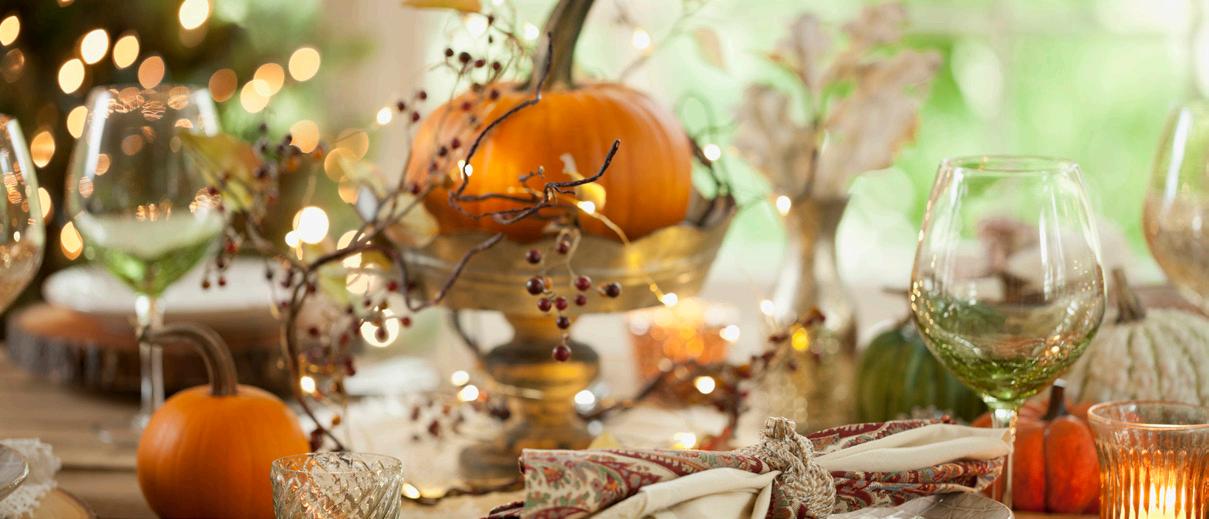
42 | Celebrating Christmas around the world.
48 | Celebrating the Festa Di San Martino in Venice.
54 | Arts
Tissot’s Adoration of the Magi.
56 | Raise a stein – it’s that time of year again! Celebrating Oktoberfest in Munich.
60 | Celebrate a Swedish Christmas!
66 | Celebrating the New Year not once but twice in New Zealand.
74 | Black Book
It’s all about the vino, and the best wineries of 2023.
76 | Celebrating the specialness of Kwanzaa.
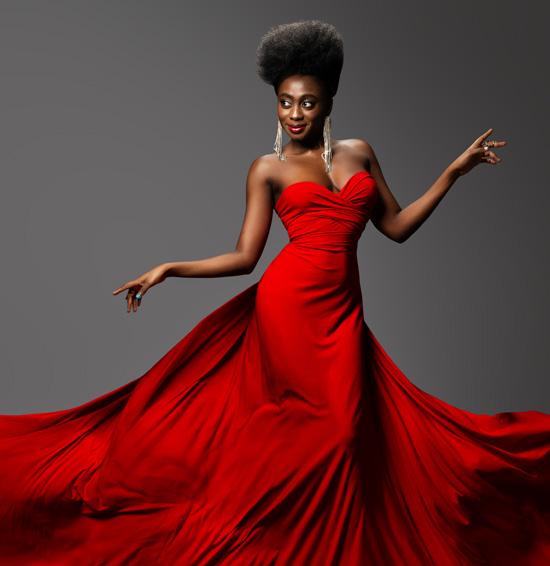
78 | Foodie
Celerate with flavors from around the world, Baked Brie with Fig Jam, Roadt Leg of Lamb and Sacher Torte
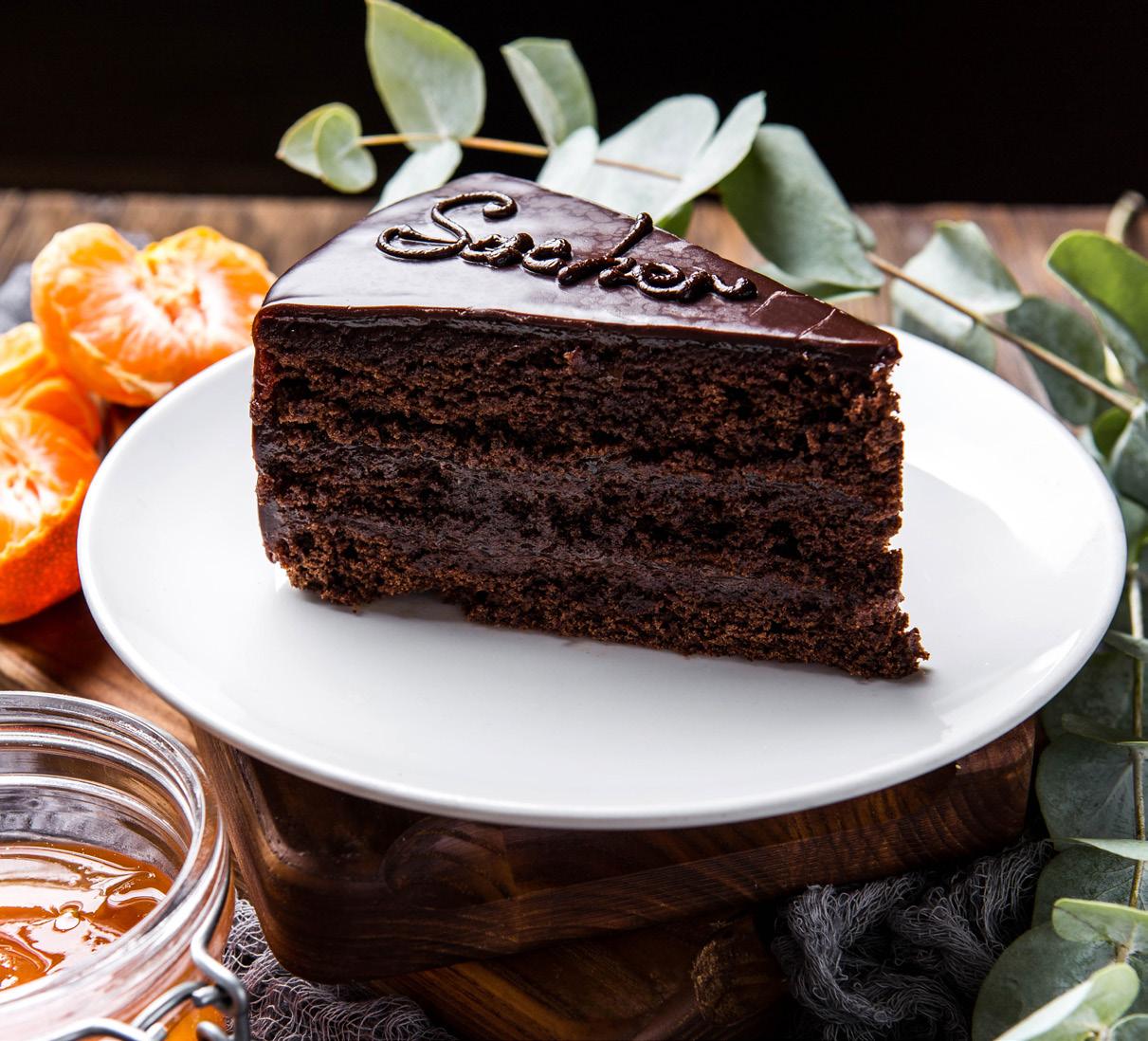
84 | Mixology
Our mixologist Charles Tappan celebrates the season with these festive
90 | Celebrating the original Halloween in Ireland – Samhain.

136 | Real Estate
John Eric + Trevor Moore brings you the best in luxury real estate from all across the metropolitan region and the country.

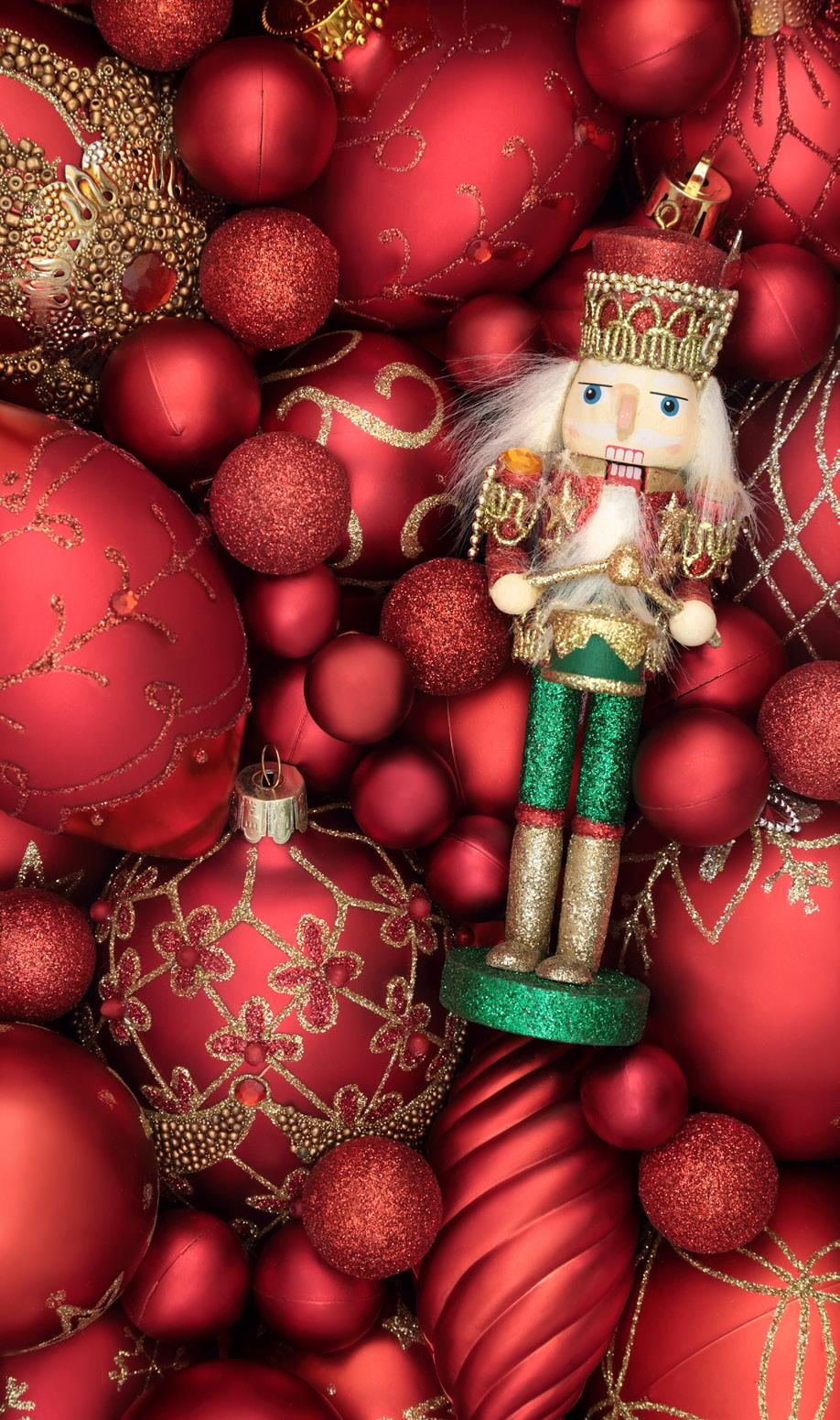

CHARLES M. TAPPAN, JR. One day, looking to find the fountain of youth, Charles went to bartending school and decided to become a bartender. Afterwards, over a decade in the beverage industry, he has gone from working at multiple restaurants that would receive Micheline stars, to competing in national cocktail competitions, to working with some of the largest brands, and eventually becoming a teacher and spirits educator. He has achieved a Bar Ready from the Beverage Alcohol Resource, as well as a Certified Spirits Specialist from the Society of Wine Educators, and a Level 3 in sprits plus a Level 2 Spirits Certified Educator from the Wine and Spirits Educational Trust. The cocktail section is put together with the most honest knowledge he has with regards to brands and ingredients, in order to make the best possible drinks for you at home.
MARC SCHLIEFER has been in the financial planning business since 1978, when he joined Equity Planning Institute, Inc. He became President of Equity Planning Institute, Inc. in 1996. With over 33 years of practicing financial planning, Marc has worked mainly on individual financial planning and counsels clients on all aspects of their financial life.
SHERRY MOELLER co-founder and principal of MoKi Media, was a previous editor in chief of Capitol File magazine/Niche Media covering politicians, celebrities, fashion, travel, hospitality and lifestyle in Washington, DC and around the country. She now specializes in public relations for interior design, architecture and hospitality clients, among other luxury brands.
HANNAH JENNER For fifteen years,Hannah Jenner was a professional sailor, racing across oceans, leading teams in the most extreme environments,and setting records along the way. In 2007 Hannah led a team of amateur sailors in the Clipper Round the World Yacht Race and in doing so became the first female captain to successfully circumnavigate the globe in that race. Retiring from sailing in 2017, Hannah wasted no time in continuing to pursue her passion of helping others to realize their potential. One year later she founded Achieving Awesome Nutrition & Lifestyle coaching and is qualified as a Master Health Coach specializing in sports performance nutrition and behavioral change. Hannah also coaches Crossfit, designs and manages Crossfit competitions, hosts the Before& After podcast, and works in project management.
FOUNDER | PUBLISHER
John Eric
MANAGING EDITOR
Angela Casey
SENIOR EDITOR-AT-LARGE
Louis Kwasniewski
CREATIVE DIRECTOR
Hillary Broadwater
EDITORIAL e-mail | inquiries@johnerichome.com
ADVERTISING
phone | 703.798.0097
ONLINE
www.johnerichome.com
Autumn beckons with a sensory symphony. It brings the touch of cooler temperatures and crisp, invigorating air. It paints our surroundings in a warm tapestry of reds, oranges, and browns, replacing the lush greens of months past. It fills the air with the enticing aroma of freshly baked apple pie and invites us to savor the ubiquitous taste of pumpkin spice in everything.
With immense delight, we unveil the latest edition of John Eric Home magazine, dedicated to the splendors of fall. Inside its pages, we embark on a global journey, celebrating the diverse holidays and festivals that mark this enchanting season. We sincerely hope you relish every moment of it!
In addition to our autumnal treat, we are thrilled to announce the launch of the brand-new John Eric Home magazine website! Navigate to www. johnerichome.com for a treasure trove of past magazine features and the entire current issue. We cordially invite you to explore our site and consider subscribing today!
From all of us at John Eric Home, we extend our warmest wishes to you, your family, and your chosen family during this festive Holiday Season.
With warm regard,
John Eric Publisher
"Every leaf speaks bliss to me, fluttering from the autumn tree."
— Emily Brontë


1. The Halkin Hotel – London - It's one of my preferred places to stay when visiting London. The hotel is exquisite and conveniently located in Belgravia, situated near Buckingham Palace. It offers easy access to the vibrant neighborhoods of Mayfair, Chelsea, Kensington, Knightsbridge, and Soho. The area is also renowned for its fantastic shopping and dining options. Additionally, you can enjoy a leisurely walk through nearby Hyde Park.

2. Rosewood Miramar Beach Hotel – Montecito/Santa Barbara – California boasts an American Riviera that rivals its European counterpart, and within this enchanting state, Santa Barbara stands as the ultimate gem. Situated within the exclusive enclave of Montecito, this property exudes sheer magnificence. A sojourn here is an experience well worth embracing as you explore and savor all that Santa Barbara has to offer.

3. Burberry - Burberry has unveiled an entire collection in captivating shades of blue for the upcoming Fall/Winter season. As someone with an unwavering affection for the color blue, I find myself absolutely thrilled by this new lineup. Among the exquisite pieces, the one that stands as an essential addition for all is their latest creation: the Cashmere Reversible Scarf in the elegant "Knight" hue.

4. Red, White & Royal Blue (The Movie) – It’s the gay rom-com we all needed. It breaks so much ground in so many ways and should be a must-watch. I’ve watched it too many times to count. Nicolas Galitzine (Prince Henry) and Taylor Zakar Perez (the President’s son, Alex Claremont Diaz) are perfect. Their chemistry melts your TV. Catch in on Amazon Prime.


5. Red, White & Royal Blue (The Book) - Reading the book is essential, going beyond merely watching the movie. In typical Hollywood fashion, the film adaptation has taken creative liberties, omitting significant aspects from the original story. Delving into the book is a must to grasp the genuine and complete love story between these two men.









Every year, as we celebrate Christmas, we are surrounded by quiet traditions. They are an integral part of the holiday. While some are based in Christianity, others are rooted in other beliefs. If you have ever pondered – while placing a beautiful nutcracker on your mantle – why it is associated with Christmas, we have your answers…
The first Christmas card was given to King James I of England in 1611. It was a large ornamental manuscript 33" x 24" in size and folded into panels. The “card” displayed an image of a rose in the center and a Christmas and New Year message to the King and his son.
Today’s custom of sending Christmas cards was started in the United Kingdom in 1843 by Sir Henry Cole, a senior civil servant. He and his friend John Horsley, an artist, designed the first card and sold them for 1 shilling each. The card had three panels. The outer two panels showed people caring for the poor, and in the center panel was a family having a large Christmas dinner. 1000 were printed and sold. They are now very rare and are worth thousands of dollars apiece.
The tradition of hanging Mistletoe in the house goes back to the times of the ancient Druids. It was meant to possess mystical powers to bring good luck to the household and ward off evil spirits.
The custom of kissing under Mistletoe comes from England. The earliest recorded date mentioning kissing is in 1784 in a song from a musical comedy called 'Two to One'.
The custom of hanging stockings comes from a story attributed to St. Nicholas. It was said that he dropped gold coins into a stocking that was drying near a window of an impoverished family.
This story sparked others to mimic the Saint’s kindness and soon the custom of placing a tangerine or satsuma and often some nuts at the bottom of Christmas stockings began. Why tangerines and satsumas? Because up until the mid-20th century, these fruits were unusual and special, especially in Europe.
The tradition of the Poinsettia is based on a Mexican legend. A poor girl named Pepita had no gift to present to the baby Jesus at a Christmas Eve mass. She didn't know what she could give, so she picked a small handful of weeds from the roadside and made them into a small bouquet. The girl felt embarrassed by her paltry gift, but as she knelt to place the weeds at the bottom of the nativity scene, the bouquet burst into bright red flowers. Everyone there claimed it was a miracle. Since that day, the bright red flowers are known as the 'Flores de Noche Buena' or 'Flowers of the Holy Night'.
Nutcracker dolls have been made in parts of what's now Germany and the Czech Republic since the late 1600s. They were originally made as symbols to bring good luck to the family and protect the home. It is said that they represent strength and power and watch over the family, keeping evil spirits and danger away.
There are records of nutcrackers being sold in a Dresden market in 1786. Napoleon occupied this area in the early 1800s, and it is believed that the nutcrackers of today might have been made to look like the French ruler and his soldiers.
The first recorded 'candy stick' is from 1837 from an exhibition in Massachusetts. They started as straight white sugar sticks and a few years later the red stripes were added. The first time they are documented as being called 'candy canes' comes in 1866; their first connection to Christmas comes in 1874.
Christian meanings were associated with the canes after they became popular. Their 'J' shape signifies Jesus, the white represents his purity while the red stripes are for the blood he shed when he died on the cross. The peppermint flavor represents the hyssop plant that was used for purifying in the Bible.

Entertainment Ready
By Sherry MoellerDining rooms have undergone changes over the last few years –from offering a work-from-home space to transforming back into spots to gather with family and friends. To make the versatile space extra special, designers Tracy Morris, Kelley Proxmire, and Annie Elliott share some tips for creating an entertainment-ready dining room, just in time for the upcoming holiday season.
Annie Elliott Design www.annieelliottdesign.com
Photos by Stacy Zarin Goldberg
Tracy Morris Design www.tracymorrisdesign.com
Photos by Anice Hoachlander
Kelley Proxmire, Inc. www.kelleyproxmire.com
Photos by Kip Dawkins
In this dining room, Designer Tracy Morris added a rug by Matt Camron Rugs featuring tones of lavender, cream, gray, and white to allow the darker tones in the table, sideboard, and floor to really pop. “I love the rug in the space because it complements the high-contrast elements in the room,” Morris says.

With a backdrop of Phillip Jeffries wallpaper, the art titled “Wings” by Kiki Slaughter was purchased from Annie Irwin Fine Art in Atlanta. The sideboard is from Hellman Chang.
The Brunschwig & Fils wallpaper in the dining room designed by Kelley Proxmire sets the tone for the entire space. The host and hostess chairs feature Schumacher velvet on the back with Pindler Lemonade fabric on the front. Illuminated by Niermann Weeks’ Avignon chandelier, the room is a glowing reminder to make every day special, whether enjoying a weekday or holiday meal.

With a background as an art historian, designer Annie Elliott is always looking for creative ways to add art to a space. In this dining room, she installed a panel of Schumacher's Brighton Pavilion on the wall and had her painter frame it in picture molding. “We wanted it to look like part of the room decoration, not a framed piece,” Elliott says.
Among Elliott’s favorite elements in the room is the custom dining room table. “We wanted an antique, but couldn't find the right one, especially since antiques that will be used, such as dining tables, buffets, and dressers, need to be in terrific shape to stand up to wear and tear,” the designer adds. “We had this table custom made by a company in England. It took a while, but it was worth it.”
The fabric on the host and hostess chairs is from Schumacher, while the reupholstered cane chairs from Restoration Hardware feature Thibaut's Ashbourne Tweed, which is stain resistant. “We love that fabric for families with kids and pets,” says Elliott.

Photos by Nova Soul Imagery and Kip Dawkins Photography
While trends still lean towards stainless steel appliances and panel-ready refrigerators and dishwashers that match the cabinetry, the TriVistaUSA, www.trivistausa.com, team was delighted to add a touch of whimsy with colorful ranges to two recent kitchen renovations. With a KitchenAid 48” Wide Dual Fuel range in Yellow Pepper and an ILVEUSA Majestic II 36” Freestanding Electric range in a custom RAL Salmon Orange color, TriVista, located in Arlington, Virginia, created kitchens with a punch of color to enjoy every day, and especially during the holiday season.

“These ranges allow for our clients to make a statement when hosting friends and family for parties,” says the TriVista team, led by Co-Owner and CEO Michael Sauri. A bright, bold color allows the range to stand out from your common stainless steel finish and to become a focal point in the space, while dual fuel functionality, as seen on the KitchenAid option, offers top-of-the-line efficiency with an electric oven and gas burners.
“Often the client’s vision is from a photograph, or some other real estate photography,” says Sauri, who adds that travel can also be a big influencer in the client’s choices. “They may love a hotel from their Italy trip, a museum in
Morocco, or a stunning hike in the Pacific Northwest, all of which are potential sources of inspiration for their own spaces.”
TriVistaUSA offers a variety of appliance packages to meet a client’s budget and aesthetic. KitchenAid, SubZero, and GE all offer options for function, budget, and color.
“As a design-build firm, we work hard to honor the overall budget for the project, so our appliance package will be catered to fit a particular need for each homeowner,” Sauri adds.
Bold ranges can work in neutral kitchens as well as kitchens that already have color in the cabinetry and other finishes. “Color and texture are important tools in any composition,” Sauri says. “It is crucial that the whole works together for the desired end.”
Many TriVista clients, such as the homeowners of the two kitchens shown, were not looking for neutral kitchens. If a wood or white tone was chosen, it was done so to make bolder choices, such as the colorful ranges, stand out. Floor stains, backsplashes, and cabinets are considered carefully to allow the range and other colors to delight the eye upon entering the space.


December 8th is an incredibly important holiday in the Buddhist world. It is Bodhi Day, also known as Enlightenment Day.
Bodhi Day is observed to mark the moment that took place 2,500 years ago when Siddhartha Gautama achieved enlightenment and became the Buddha or ‘awakened one.’ The story goes that, rejecting the luxurious lifestyle of a prince, Siddhartha left the comforts of the palace at the age of 29 and went on a journey of deep introspection to seek meaning in life.
He meditated in Bodh Gaya, a town in northeastern India, under a Peepal tree, now famously known as the Bodhi Tree, and resolved to continue meditating until he achieved ‘bodhi’ (‘enlightenment’). He attained bodhi at the age of 35, after 49 days of continuous meditation, and was then able to see the interconnectivity of the world and beyond. These realizations became the Four Noble Truths. Siddhartha Gautama was now fully awake. He was now “The Buddha, The Teacher.”
Buddhists commemorate this day by meditating, studying the ‘dharma’ (‘universal truth or law’), chanting sutras (Buddhist texts), and performing kind acts towards others. Some people mark the day in a more traditional sense by cooking a meal of tea and cakes. Bodhi tree plantings are held throughout the month and are usually accompanied by tea ceremonies, while incense and multicolored lights are displayed during the following month in the capital city of Tokyo and in towns and villages across the country. However, Bodhi Day is not an official holiday in Japan — only Buddhists, who make up about 34% of the country’s population, observe the day.
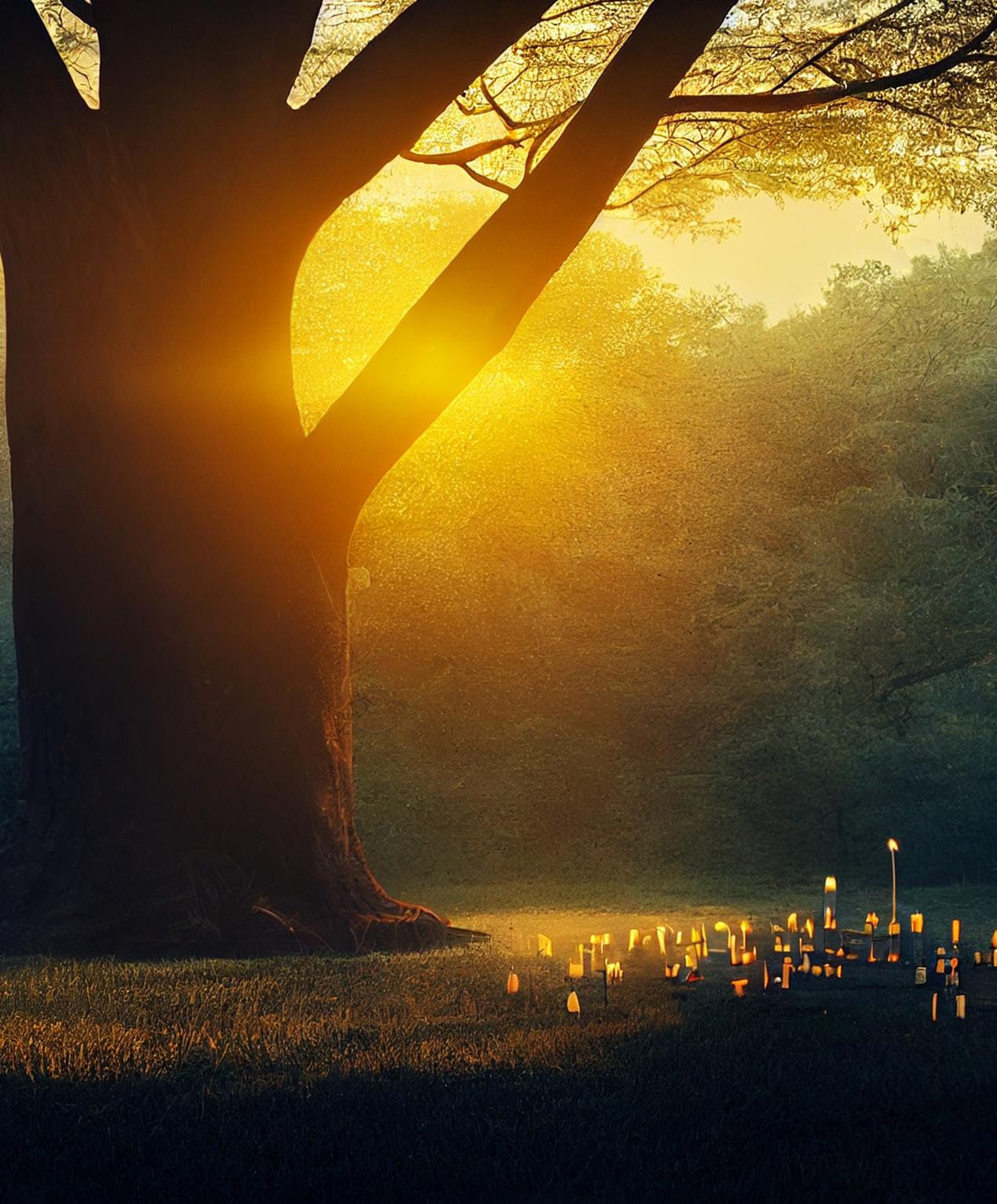
Buddhists believe that Bodhi Day helps one to remember vital lessons of life through both reflection and the teachings of Buddha. The lessons are deemed priceless as they teach us to find meaning in our lives and to live out the best parts of ourselves.
Another gift associated with Bodhi Day is the deepening of one’s spirituality. A spiritual awakening and deepening offers meaning and purpose in life. This day offers a platform to get a great deal of that deepening. It also unites us for the common good.
While there are minor variations throughout the Buddhist world, most traditions remain the same. Houses are decorated with pictures or little statues of the Buddha under a fig tree to remember the day of his awakening. While Buddhists gather and stay in prayer during the night. Being a part of these prayers ensures the participant will have a spiritually renewing time.
In many countries, such as Laos, people mark the holiday by decorating fig trees with bright, multi-colored lights. The various colors in the lights represent the many different paths to achieving similar enlightenment as the teachings of the Buddha.
After Bodhi Day has come to a close, many continue to observe the significance of this day by giving small gifts to loved ones over the course of the next 30 days.
• It is ancient. The Bodhi Tree is a very old sacred fig tree belonging to the family Ficus religiosa.
• It can grow anywhere. Although it originated in Bodh Gaya, the tree now grows in other parts of the world too.
• It is religiously symbolic. In religious iconography, its leaves are almost always represented as being heart-shaped.
• It is nourished by constant watering.
• The original site of the Bodhi Tree, at the Falgu River in Gaya, India, is a pilgrimage site. Its descendant, the Mahabodhi Tree is a frequent destination for pilgrims and is the most important of the four main Buddhist pilgrimage sites.


Bodhi Day is celebrated throughout the Buddhist world. A wonderful place to visit during the celebration in Kyoto, Japan.

PLACES TO STAY
Hotel the Mitsui Kyoto
284 Nijoaburanokojicho, Nakagyo Ward, Kyoto, 604-0051
The Four Seasons Kyoto
445-3 Myohoin Maekawa-Cho, Higashiyama Ward, Kyoto, 605-0932
Sowaka
480 Kiyoicho, Higashiyama Ward, Kyoto, 605-0821
PLACES TO EAT
Tenjaku - Tempura
570 Botambokocho, Kamigyo-ku, Kyoto, 602-8475
Nishijin Fujiyoshi - Japanese
626-14 Kamitenjincho, Kamigyo-ku, Kyoto, 602-0082
Yusokuryori Mankamero - Japanese
387 Ebisucho, Kamigyo-ku, Kyoto, 602-8118

Diwali, the festival of lights is the most awaited and the most celebrated festival of India. People throughout the country welcome the festival enthusiastically. This wonderful festival is a five-day celebration, but it is on the third day that the key rituals of the Diwali festival take place – the Lighting of Diyas, worshipping the Laxmi Ganesha to summon health and wealth for the upcoming year, and lighting firecrackers.
The exchange of heartfelt gifts during Diwali has now become a mandatory part of the celebration. On November 12th, celebrants throughout the country welcome the festival enthusiastically. Feasts are also mandatory and include different varieties of sweets and savory foods.

• People often think of Diwali as a Hindu festival, but it is also celebrated by Sikhs and Jains.
• Diwali takes place annually and lasts for five days, marking the start of the Hindu New Year. The exact dates change each year and are determined by the position of the moon – but it usually falls between October and November.

• The word Diwali (or Deepavali as it’s sometimes called) means “row of lights” in Sanskrit. During the festival, people decorate their homes with lights and oil lamps, called diyas.

• For some, Diwali honors the Hindu goddess of wealth, Lakshmi. The lights and lamps are said to help Lakshmi find her way into peoples’ homes, bringing prosperity in the year to come.
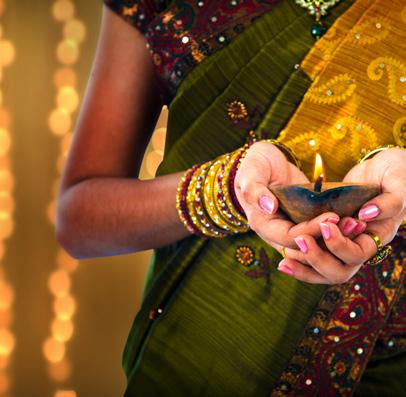
• Diwali is also a celebration of good triumphing over evil, and different legends based on this theme are associated with the holiday. In northern India, Hindus celebrate the return of the deities (gods) Rama and Sita to the city of Ayodhya, after defeating the evil king Ravana.
• Rangoli is a popular Diwali tradition –– beautiful patterns made using colorful powders and flowers. People draw rangoli on the floor by the entrance of their homes to welcome the gods and bring good luck.
• Diwali is celebrated by thousands of people in countries all around the world. During Diwali, Hindus living outside India gather at places of worship called mandirs to leave offerings to deities, watch fireworks displays, and share food.

It’s a nationwide tradition. The morning of Thanksgiving Day, millions of people tune in to watch the Macy’s Thanksgiving Day Parade. Starting the holiday doesn’t seem right without it.
Although originally known as the Macy’s Christmas Parade, the first parade was actually held on Thanksgiving Day, November 27, 1924. It started life as a marketing ploy. An effort to boost holiday sales and highlight Macy’s new store. Store employees marched to Macy's Herald Square, the flagship store on 34th Street, dressed in vibrant costumes. There were floats, professional bands, and live animals borrowed from the Central Park Zoo. At the end of that first parade, Santa Claus was welcomed into Herald Square and enthroned on the Macy's balcony at the 34th Street store entrance, where he was then crowned "King of the Kiddies." With an audience of over 250,000 people, the parade was such a success that Macy's declared it would become an annual event, despite media reports only barely covering the first parade.
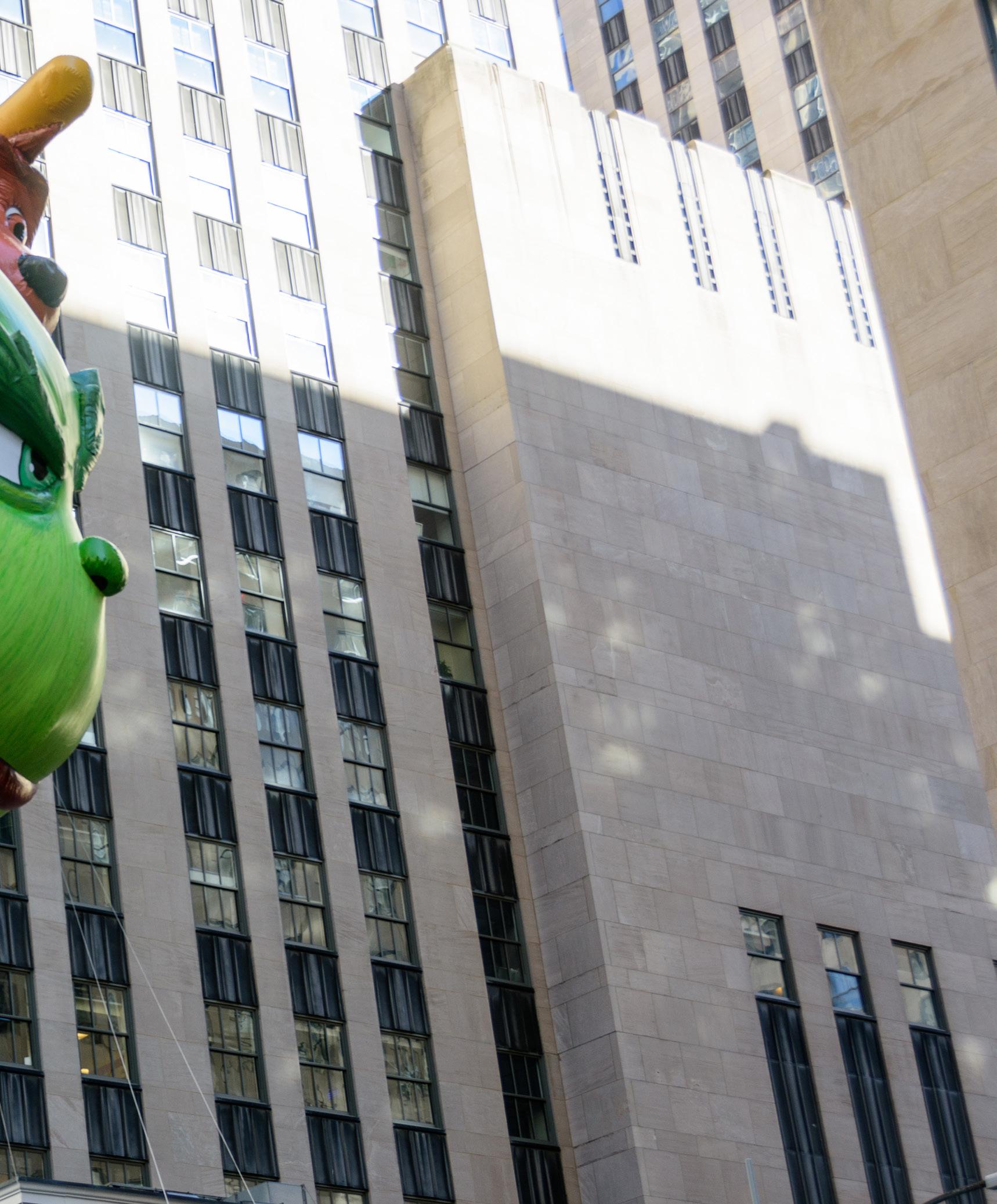

Balloons were introduced to the parade three years later, in 1927, with Felix the Cat having the honor of being the first parade balloon. However, with no way to deflate the balloons after the parade, they were released into the air where they popped as they ascended. The following year valves were put in the balloons that allowed the helium to escape slowly when they were released at the end of the parade. A return address was provided, and a reward was offered in hopes that the balloons would be returned. But not all balloons made it back. One landed in the East River while another drifted out to sea. In 1932 one stray balloon wrapped itself around an airplane’s wing sending it into a tailspin. After that, balloons were not released again.
Through the 1930s, the parade continued to grow, with crowds of over one million people lining the parade route in 1933. The annual festivities were broadcast on local radio stations in New York in 1934.

The parade had to be suspended from 1942 to 1944 because of World War II. Rubber and helium were needed for the war effort. But it returned to its glory in 1945 and became known nationwide shortly afterward, having been prominently featured in the 1947 film Miracle on 34th
Street. The movie actually included footage of the 1946 festivities. Shortly afterward, in 1948, the event had its first broadcast on network television. And, ever since, it has warmed hearts throughout the country.
As the parade marches from Central Park West to 59th Street and then heads east to 6th Avenue (eventually ending in front of Macy's at Herald Square), scores of balloons float between the skyscrapers, creating excitement.
All viewers – whether on the route itself or at home watching on television – have their favorite balloon. The one that each year they look forward to seeing. For some, it may be Snoopy, who has the most balloons in parade history. For others, a new balloon such as Stuart the Minion may float supreme. To be fair, all the balloons are impressive. Their dimensions vary, but most are about five to six stories high and somewhere around 60 feet long and 30 feet wide. Each balloon needs around 90 handlers.
Although cooking Thanksgiving dinner is an effort, being a balloon handler in the Macy’s Thanksgiving Day Parade is quite a task too…

If you decide to travel to New York to view the Macy’s Thanksgiving Day Parade, you won’t regret it.

PLACES TO STAY
Mandarin Oriental 80 Columbus Cir, New York
Baccarat Hotel 28 W 53rd St, New York
The Ritz-Carlton Central Park 50 Central Park S, New York
PLACES TO EAT
Chambers - Modern 94 Chambers St., New York
Atera – Modern 77 Worth St., New York
Manhatta - Modern 28 Liberty St., New York

Every December, Hanukkah is celebrated by those of the Jewish faith around the world. But, perhaps, its most significant celebration is throughout Israel itself. For those who have or do participate in the Festival of Lights in The United States, the Israeli tradition is marked with differences. Among them, the dreidel, the food, the time off school, musical programs, and, of course, the lights.
The difference between an Israeli and an American dreidel is well-known. Dreidels in Israel have one different letter than dreidels in the United States and elsewhere. In the diaspora, dreidels have the Hebrew letters nun, gimmel, hey, and shin, representing the phrase “nes gadol haya sham” — “a great miracle happened there.” In Israel, however, dreidels have a pey instead of a shin, an acronym for the phrase “nes gadol haya po,” or, “a great miracle happened here.” Of course, that is to be expected as the miracle of the oil took place in the Holy Land.
Another difference arises in the territory of foods. In the United States, latkes are the Hanukkah staple. However, in Israel at Hanukkah, sufganiyot – a donut – is what it is all about. The “basic” sufganiyot is drenched in powdered sugar. The jelly filling is incredibly sweet. The combination creates a delicious and uber-sweet treat.

But there is another sufganiyot that must be mentioned. In recent years, just like donuts in The United States have gone upscale, sufganiyot has morphed into an even more decadent treat. These “new” sufganiyot mix fillings like chocolate ganache, passionfruit jelly, and meringue. The beautiful, upscale creations were first popularized by the Israeli chain Roladin, and they are gorgeous.
In The United States, Hanukkah doesn’t bring time off from school, but in Israel it does. Kids are off from school over the holiday. But, it is no such luck for their parents. While the kids may enjoy a vacation, parents generally must work. But offices do hold many holiday Hanukkah parties, so there is something for the adults to look forward to as well.
Perhaps the biggest distinction of celebrating Hanukkah in Israel versus the rest of the world is the Hanukkah theatrical productions. These are grandiose. The country turns into a variation of Broadway that both enthralls and entertains.
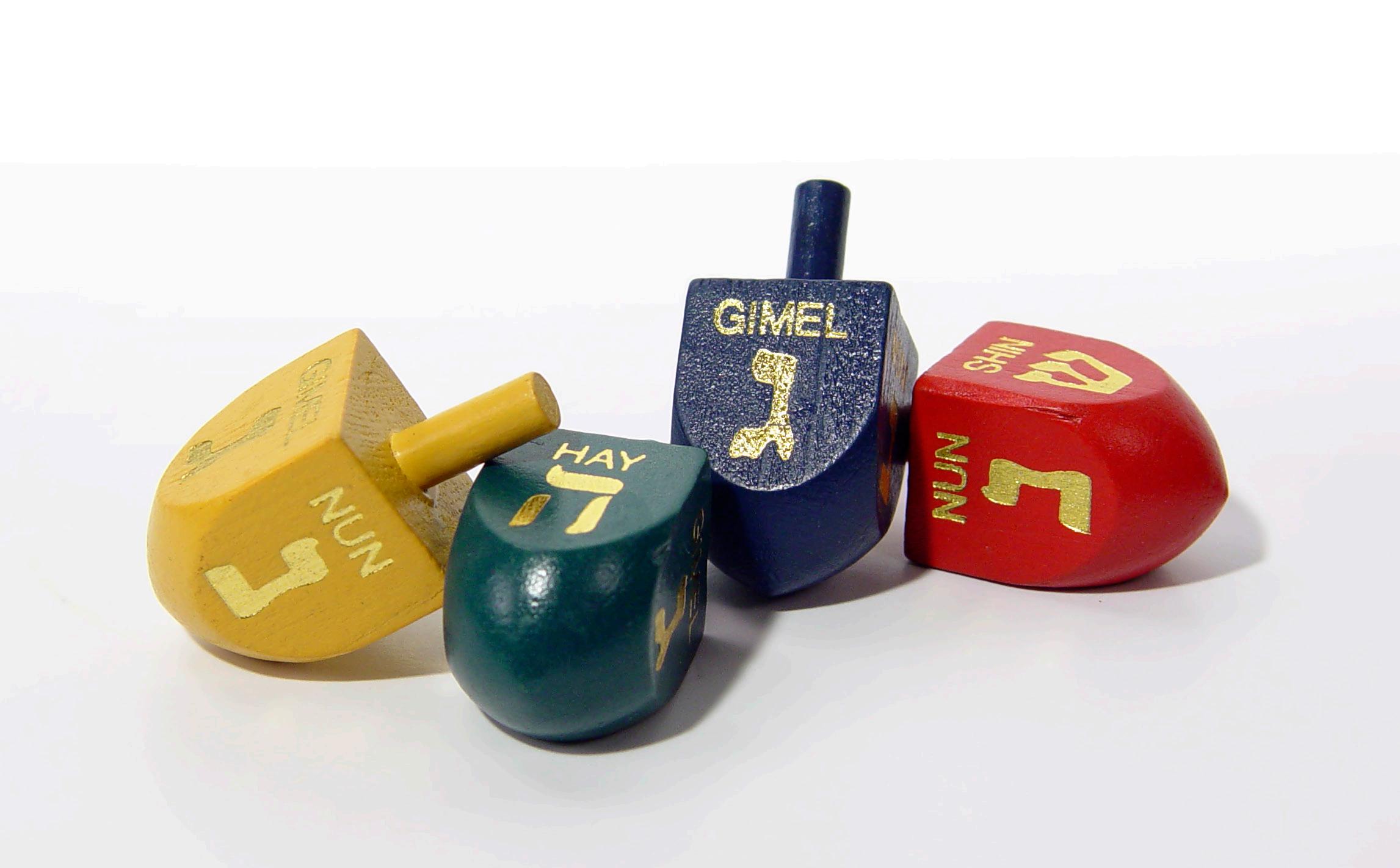
Aside from Hebrew language adaptations of American musicals, there is the Festigal, perhaps the biggest musical production of them all. This themed musical contest began in 1981 and is still going very, very strong. The production pits the biggest Israeli stars against each other in musical numbers.
In Israel, Hanukkah shines brightly. Literally. Much like Christmas decorations in The United States, Israeli municipalities put on light displays. All across the country, candles flicker in windows. Especially in religious communities like Bnei Brak and certain neighborhoods of Jerusalem. It is a sight to behold.

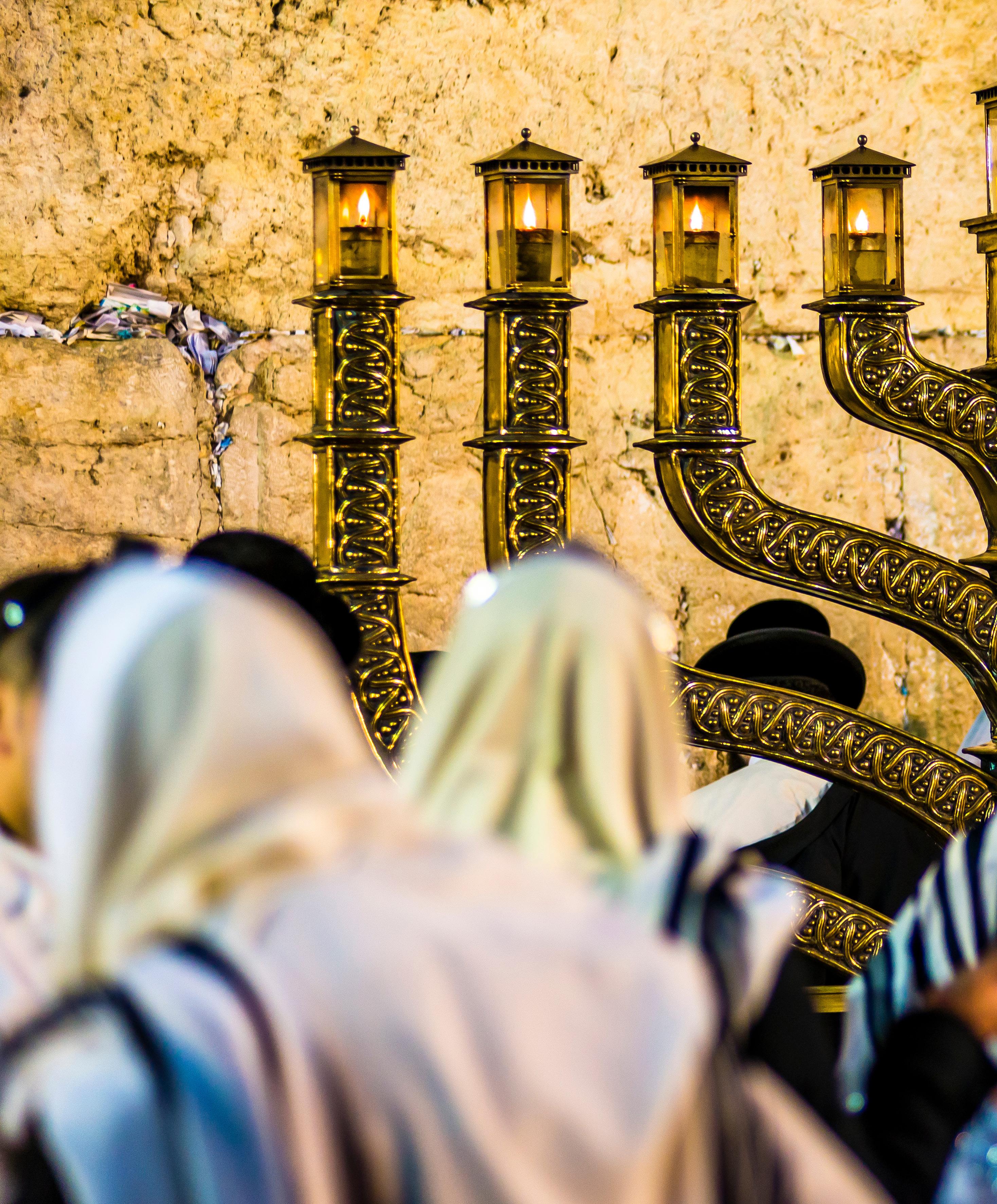
Celebrating Hanukkah in Israel is an amazing experience. The whole country is bathed in lights and good spirits. Tel Aviv is probably the easiest location to participate in The Festival of Lights.
PLACES TO STAY
Elkonin Tel Aviv - MGallery Hotel Collection
Lilienblum St 9, Tel Aviv-Yafo, 6513113
The Jaffa, a Luxury Collection Hotel, Tel Aviv Louis Pasteur St 2, Tel Aviv-Yafo, 6803602
The Norman Tel Aviv
Nachmani St 23-25, Tel Aviv-Yafo, 6579441
WHERE TO EAT
Yaffo Tel Aviv - Israeli
Rehov Yigal Alon 98 Electra Tower, Tel Aviv
JAFFA – Israeli
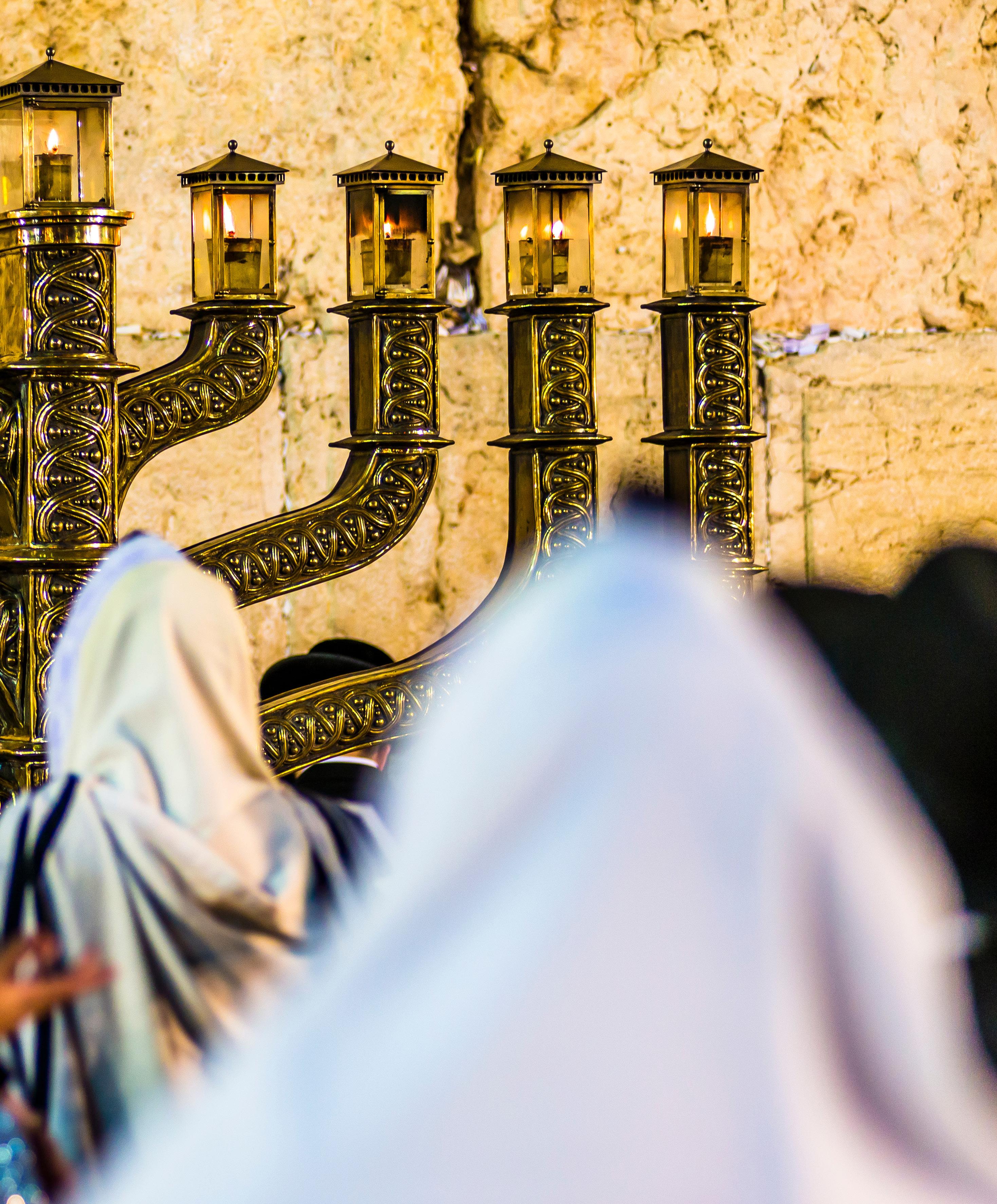
Tirtsa Street 17, Tel Aviv
Timna – Israeli Herzl 14.5, Tel Aviv
During the fall season, there are many opportunities to eat pie! Whether it’s apple, pumpkin, or pecan – ‘tis the season of this dessert. If you need a new pie cutter to slice and impress, check out these lovelies…



detailed in Lismore's signature diamond and wedge cuts. The server is made in Ireland.

Mary Gordon, Vice President at InSite Builders & Remodeling, www.insiteremodeling.com, loves to entertain, especially at Thanksgiving. Childhood traditions, her time at the White House, and family gatherings continue to inspire her zest for entertaining.

Gordon began her career working at The White House after graduating from George Washington University. From 1984 to January 1989, she served as the Assistant to First Lady Nancy Reagan’s Press Secretary. Following this, she was at home raising a family and helping on a part-time basis with administrative tasks at InSite. Through the years her duties have expanded, and, as Vice President, she oversees the Administrative and Marketing divisions and works closely with the President Stephen Gordon and General Manager Chris Katkish to develop and maintain the mission, vision, and culture of the company.
At home, her family and friends are happy recipients of her hosting and culinary skills. Her favorite holiday is Thanksgiving with its tried-and-true traditions, family recipes, old and new
friends, and the opportunity to spend treasured time together. Gordon provides some tips for making Thanksgiving a day to remember.
Nothing says Thanksgiving more than the dining room table with its festive feast. Do you use special china, silverware, and linens for this and other special occasions? If so, tell us about the items, their history, and why they’re special to you.

Gordon: My earliest memories of Thanksgiving are at my grandparents’ house. My grandmother always set her dining room table with her beautiful jewel-toned crystal goblets from the Czech Republic. I have those goblets now, and every Thanksgiving I set my dining room table with them.
When I began hosting Thanksgiving, I used her colored goblets with a formal, starched white linen tablecloth and napkins, just as my grandmother did. Through the years, I’ve replaced the white with different colored and textured tablecloths to create a more modern aesthetic. It takes a little
practice and experimentation to get it right, but the result is well worth the effort, and I’m certain my grandmother would approve.
The blending of treasured family traditions with new ideas and customs is, for me, the very heart of Thanksgiving. An elegantly set Thanksgiving table makes family and friends feel so special and valued. It also contributes to the sense of gratitude, connection, and celebration that Thanksgiving represents.
How do you decorate the center of the table? Can you offer simple and elaborate centerpiece options?
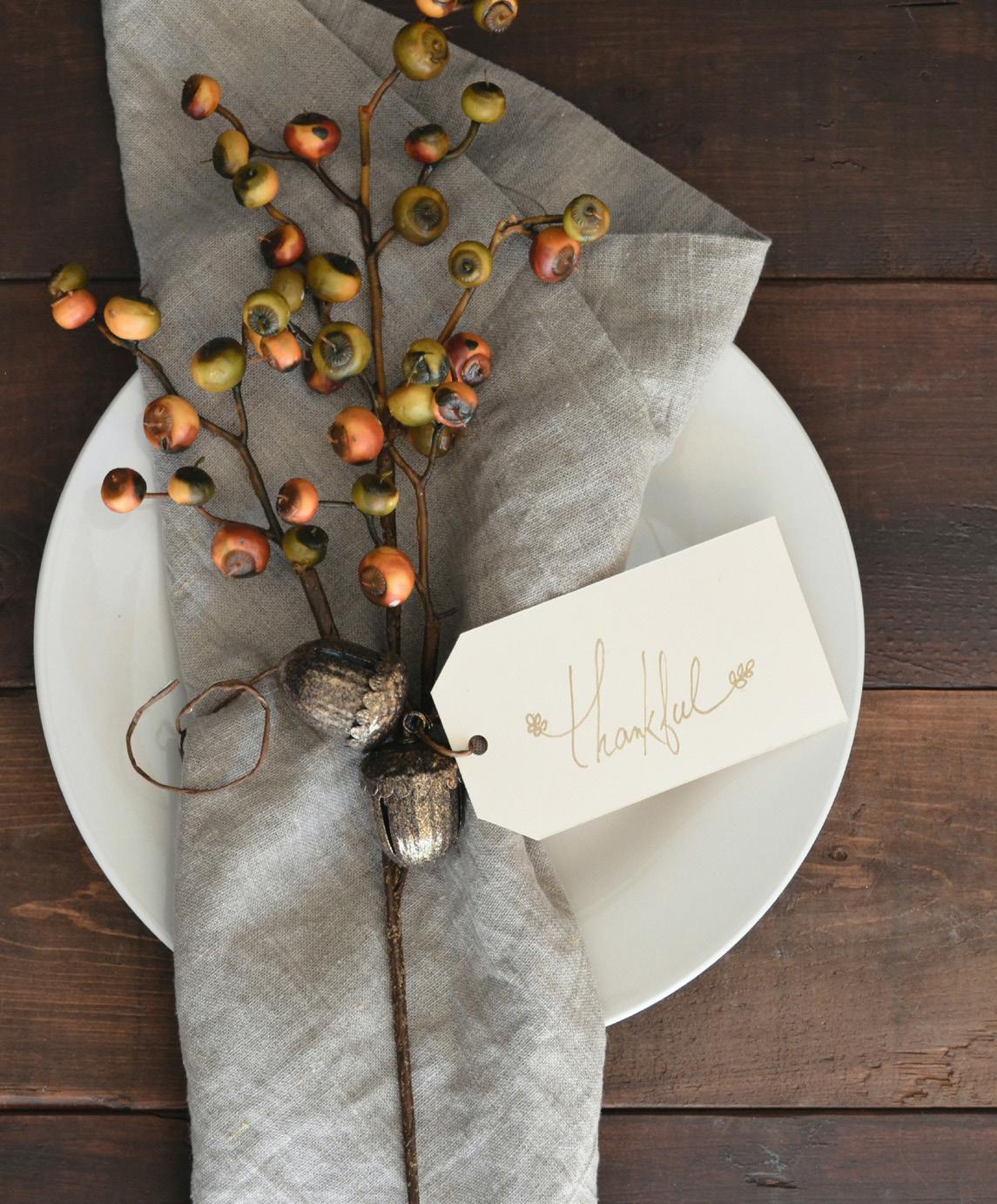
Gordon: Often, we have 20-plus people for Thanksgiving, so I have multiple tables in multiple rooms, each with different centerpieces. I always have a floral centerpiece in the dining room, but I try to be a little more creative for the centerpieces on the other tables.
I love candlelight, and one of the simplest and most effective centerpieces is to place ivory pillar candles in glass hurricane holders on a burlap tablecloth or table runner, spread a few white mini pumpkins on the table, lower the lights, and you have a perfect setting for a Thanksgiving gathering.
For other simple centerpieces, fill a straw basket with white and orange mini pumpkins and Bosc pears, or fill a basket with a vibrant green plant and surround it with mini pumpkins and votive candles. Another option is to build a bouquet of lilies and tulips, which come in a wide array of fall colors, such as soft oranges, corals, and yellows. Keep all the blooms at the same height and place them in a vase.
Trader Joe’s has pre-made floral arrangements in pumpkins that make a charming centerpiece, or if placed on a hall table, is a festive way to greet guests as they enter your home.
What about the front door and foyer? What are a few tips to welcome family and guests into your home for the Thanksgiving holiday?
Gordon: There is something quietly elegant about decorating a front door and entryway with natural, seasonal items, such as pumpkins, gourds, pinecones, and mums. For me, there’s no better way to welcome guests on Thanksgiving than to walk through an autumn display at the front door into a home filled with candlelight, an attractively set table, a warm fire, and football on the TV.
Do you introduce new foods or traditions each year? If so, what do you have planned for this Thanksgiving?
Gordon: I never accept the generous offers from friends to bring something when we entertain, except at Thanksgiving. When guests inquire how they can help with dinner, I ask
them what they would like to bring, and this is how we introduce wonderful food into our traditional fare every year.
Last Thanksgiving, a couple with a Greek heritage brought Spanakopita, which is Greek spinach pie, as an appetizer and it was devoured in minutes. Another year, my niece replaced mashed potatoes with gingery miso smashed potatoes with sesame seeds. Delicious!
Combining our traditional favorites with new and unique foods contributes to the rich tapestry of our Thanksgiving celebrations.
Gordon: Our favorite family tradition at Thanksgiving is simply to welcome all to our home. Everyone knows that they can invite friends, relatives, co-workers, in-laws, and out-laws to our house. This “welcome” policy has been very rewarding and resulted in new friendships, lots of laughter, camaraderie, animated conversations, and, ultimately, so many happy memories.
I credit my grandparents and those beautiful jewel-toned crystal goblets for setting a standard for Thanksgiving that we follow to this day. It seems Thanksgiving is everyone’s favorite holiday; I know for certain it’s mine.
Gordon: There are two traditional favorites at our house that are requested year after year to accompany our Thanksgiving turkey dinner. One is Aunt Eunice’s Sweet Potato Casserole and the other is Pumpkin Chiffon Pie with homemade whipped cream.

CELEBRATES CHRISTMAS WITH A HOST OF DIFFERENT TRADITIONS


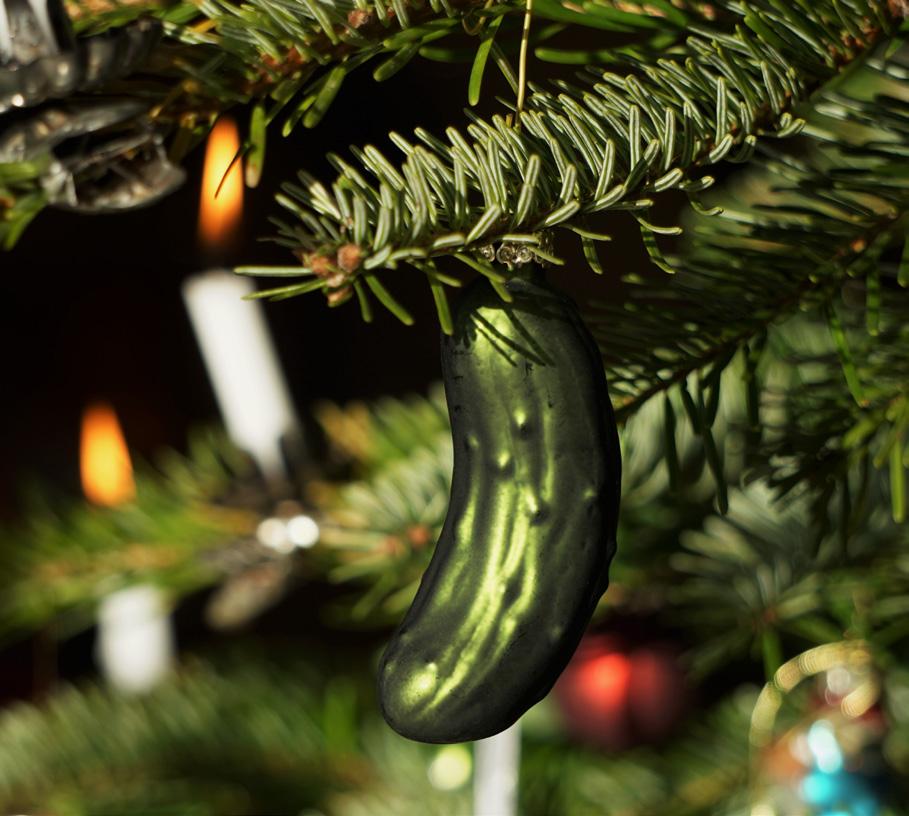









A sinister Santa lurks around Austria. He’s a ghoulish creature called 'Krampus', the evil accomplice of St Nicholas, and is said to wander the streets in search of badly behaved children.
During the month of December, terrifying masked figures wander the streets and scare kids and adults alike with pranks. If this holiday tradition sounds like your kind of thing, be sure to check out the annual Krampus parade in Vienna.
Forget about Christmas decorations such as baubles, tinsel and stars, Ukrainians use decorations that mimic the natural formation of spiders' webs shimmering with dew.
The tradition goes back to a folktale about a poor widow who could not afford to decorate a tree for her children. Legend has it that spiders in the house took pity on the family, and spun beautiful webs all over the tree, which the children awoke to find on Christmas morning. Spiders' webs are also considered to be lucky in Ukrainian culture.
In 1974, Kentucky Fried Chicken released a festive marketing campaign in Japan. The seemingly simple slogan "Kurisumasu ni wa kentakkii!" (Kentucky for Christmas!) spawned a national tradition that still thrives to this day. Although Christmas isn't a national holiday in Japan, families from all over the country head to their local KFC for a special Christmas Eve meal.
This Christmas tree tradition, embraced around the world today, is believed to have started in Germany back in the 16th Century. Although some claim that the tradition may not be German after all.
One legend says that the Christmas pickle originated in Spain when two young boys were held as prisoners inside a pickle barrel. The heroic Saint Nicholas rescued the boys and brought them back to life. Either way, a pickle on the Christmas tree is a tradition one can totally get behind.
In the Venezuelan capital of Caracas, swathes of city-dwellers make their way to mass on roller skates every year on Christmas morning. The tradition is now so well established that many of the city's streets are closed to traffic from 8 a.m. so that the skating congregation can get to church safely.
Many homes in Finland come equipped with their own sauna, and at Christmas time this spot becomes a sacred space associated with long-dead ancestors. On Christmas Eve, it's customary to take a long sit in the sauna, which is also believed to be home to the legendary sauna 'elf.’
After the sauna session, Finns head out to the evening celebrations - while the spirits of those ancestors take their place in the bubbling water.
Every year in the days leading up to 25th December, Dutch children place their shoes by the fire in the hopes that Sinterklaas will fill them with small gifts and treats in the night. Traditionally, carrots are left in the shoes for Sinterklaas' faithful steed, a white horse named Amerigo.
Forget Santa and 25th December when in Italy, as all the action takes place on the eve of 5th January. According to folklore, an old woman named Befana visits all the children of Italy to fill their stockings with candy and leave them presents if they've been good. Just like Father Christmas, Befana enters through the chimney and is left treats by the children who live there - typically wine and local delicacies.
One of the more unique festive traditions comes from Iceland, where a giant cat is said to roam the snowy countryside at Christmas time. Traditionally, farmers would use the Yule Cat as an incentive for their workers - those who worked hard would receive a new set of clothes, but those who didn't would be devoured by the gigantic cat-like beast.
Festive fried caterpillars may seem like one of the more unusual Christmas traditions, but these caterpillars aren't just the run-of-the-mill variety you find in the garden. The Pine Tree Emperor Moth, or Christmas caterpillar, is covered in very festive hues - giving all who swallow a little extra luck in the coming year.
A Donald Duck video from a 1958 Christmas special called "Kalle Anka och hans vänner önskar God Jul" or "Donald Duck and his friends wish you a Merry Christmas" is still a hit in Sweden today. Every Christmas, families around Sweden gather around the television at 3 p.m. sharp to watch Donald deliver his raspy message.
Christmas is planned around the television special, and more than 40% of Sweden's population still tune in like clockwork.
In New Zealand, Christmas trees are all about the pōhutukawa, a beautiful tree that is native to New Zealand with gnarled roots and bright crimson flowers. The first mention of the pōhutukawa tree came from Austrian geologist Ferdinand von Hochstetter in 1867. He described locals decorating their churches and homes with the brightly colored branches at Christmas. Today, the pōhutukawa tree is a recognized symbol of Christmas around New Zealand and is featured on Christmas cards, decorations, and even in the Christmas carols that children sing at school.





On November 11th, a lovely holiday is celebrated throughout Italy, especially in many small Italian towns. Il giorno di San Martino, Saint Martin’s Day, is truly central to the Italian traditions of the fall. It’s a symbol of all that this season brings while offering a window to the winter that is about to come. Similar to Thanksgiving in nature, it is a time to celebrate not only the saint but also the wine and nut harvests in the country.

Saint Martin was a Roman military officer who was an early convert to Christianity. Legend says that St Martin was riding his horse through a city, in the depths of winter, when he saw a poor man, dressed in rags and begging. Martin’s response to this man’s situation was to cut his cloak in half and give half of his cloak to the frozen man. A simple act of kindness and generosity.
That night Martin had a dream – in his dream Jesus appeared before him wearing the exact same military cloak that Martin had cut in half to give to the poor man. The details are sketchy, as is often the case with early Christian legends, but it is believed that is why Martin then converted to Christianity and went on to become the third Bishop of Tours, in France.
The San Martino story has been captured in countless paintings and sculptures. In Germany, the main entrance of Hoechst Castle depicts the saint cutting his cloak in half to give to the poor man. Meanwhile, artists have painted the scene, showing the knight in shining armor helping the poor man at his feet. A perfect tale of morality, kindness and humility.
In northern Italy, especially in agricultural areas, all contracts used to end on November 11. For this reason, it was not unusual on that day to run into people moving from farm to farm with overpacked carriages. This tradition was called “to do Saint Martin”, fare San Martino. In some dialects of the North “fare San Martino” retains the meaning of moving.
Perhaps the best place to partake in the Festa is in Venice. Here, the tradition of San Martino has developed into a delightful day for the local children. The young ones parade through the streets banging pots and pans asking storeowners and passers-by for small change and candy while chanting a nursery rhyme in Venetian dialect. With their earnings, they buy a classic San Martino cookie.
These cookies are made by bakeries and pastry shops, and all are beautifully decorated in the shape of a man on a horse. The man is, of course, San Martino. The large cookies are elaborately covered with sweets, chocolate coins, and icing sugar, and the shopkeepers happily give them to the children. In the days leading up to 11th November, the shop windows are filled with these colorful and joyous displays. Over time the local bakeries have developed more and more elaborate and highly decorated San Martino treats.
It goes without saying that Italy is the land of food and wine. So, of course, there are traditions associated with Saint Martin’s Day and the fall harvest. Chestnuts (castagne) and Vino Novello to be exact.
Chestnuts from Umbria—particularly marroni from the forests surrounding Spoleto—are sweet, creamy flavor bombs. Because their piping hot toasted shells are difficult to open, they are scored with a sharp knife before roasting the nuts whole in perforated metal pans over the coals in fireplaces, wood stoves, or bonfires. Once the shells blacken and peel back from the escaping steam of the cooked nutmeat inside, they are wrapped in a large cloth and rolled between the table-top and able hands to loosen the shells from the interior.
Vino Novello is the perfect accompaniment to the richness of roasted chestnuts. This ‘young wine’—which officially goes on sale on November 6th but is traditionally consumed the evening of the 11th to celebrate San Martino–is a light, fruity red similar in taste and production to the French Beaujolais Nouveau. Made by accelerating the fermentation process, Novello does not have tannins and will go bad if not consumed the same day it is opened. Not to be confused with Vino Nuovo (which is simply ‘new wine’, or wine that has just finished its traditional fermentation process and has not yet begun to age) Novello can be found in most wine shops.
The Festa di San Martino is a wonderful holiday that incorporates the most iconic cultural elements of Italy, a strong religious base supplemented by an overarching warmness and focus on children, topped off with wine and chestnuts.

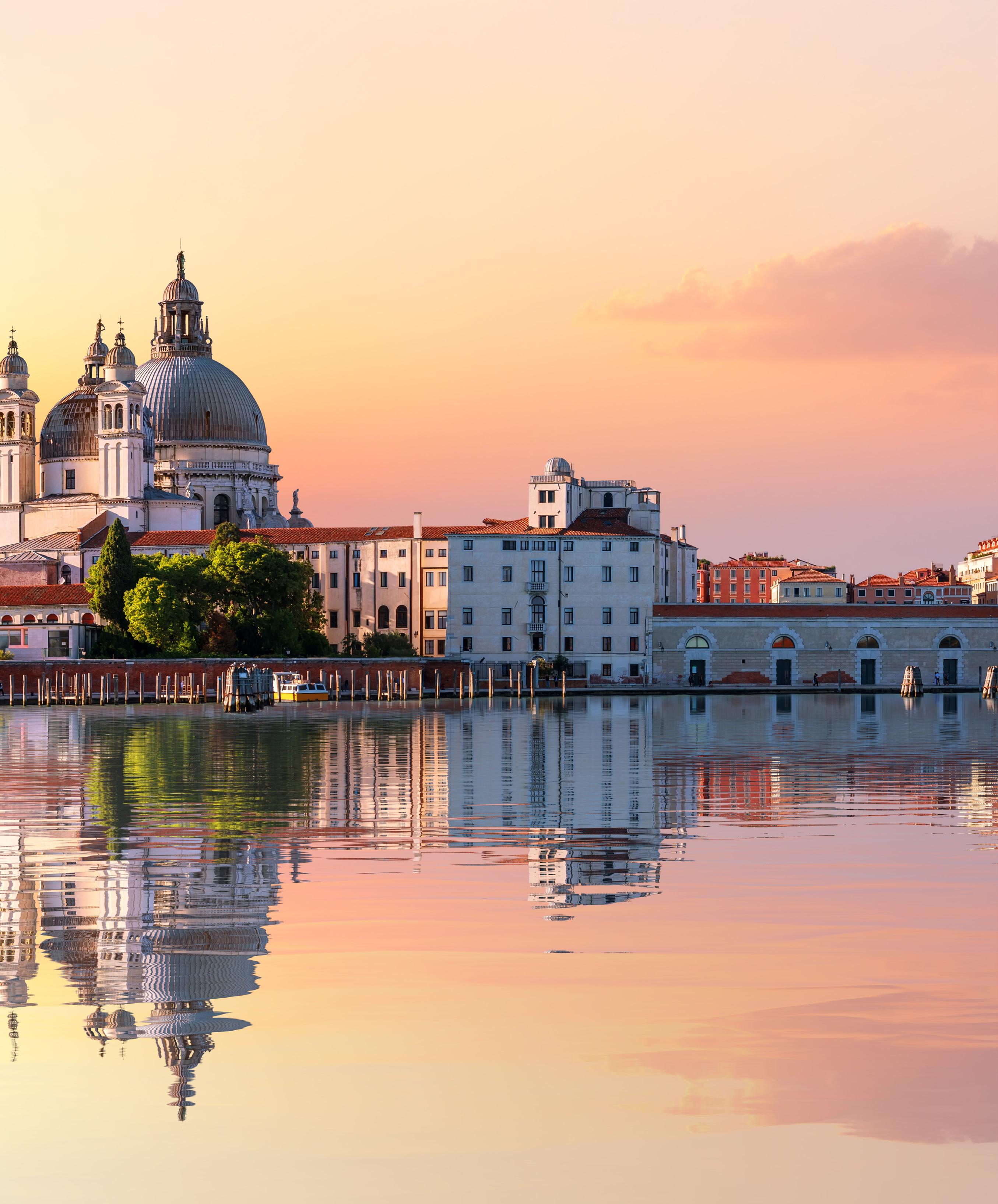
Although the Festa di San Martino is celebrated throughout Italy, it is in Venice where the holiday is most elaborate.
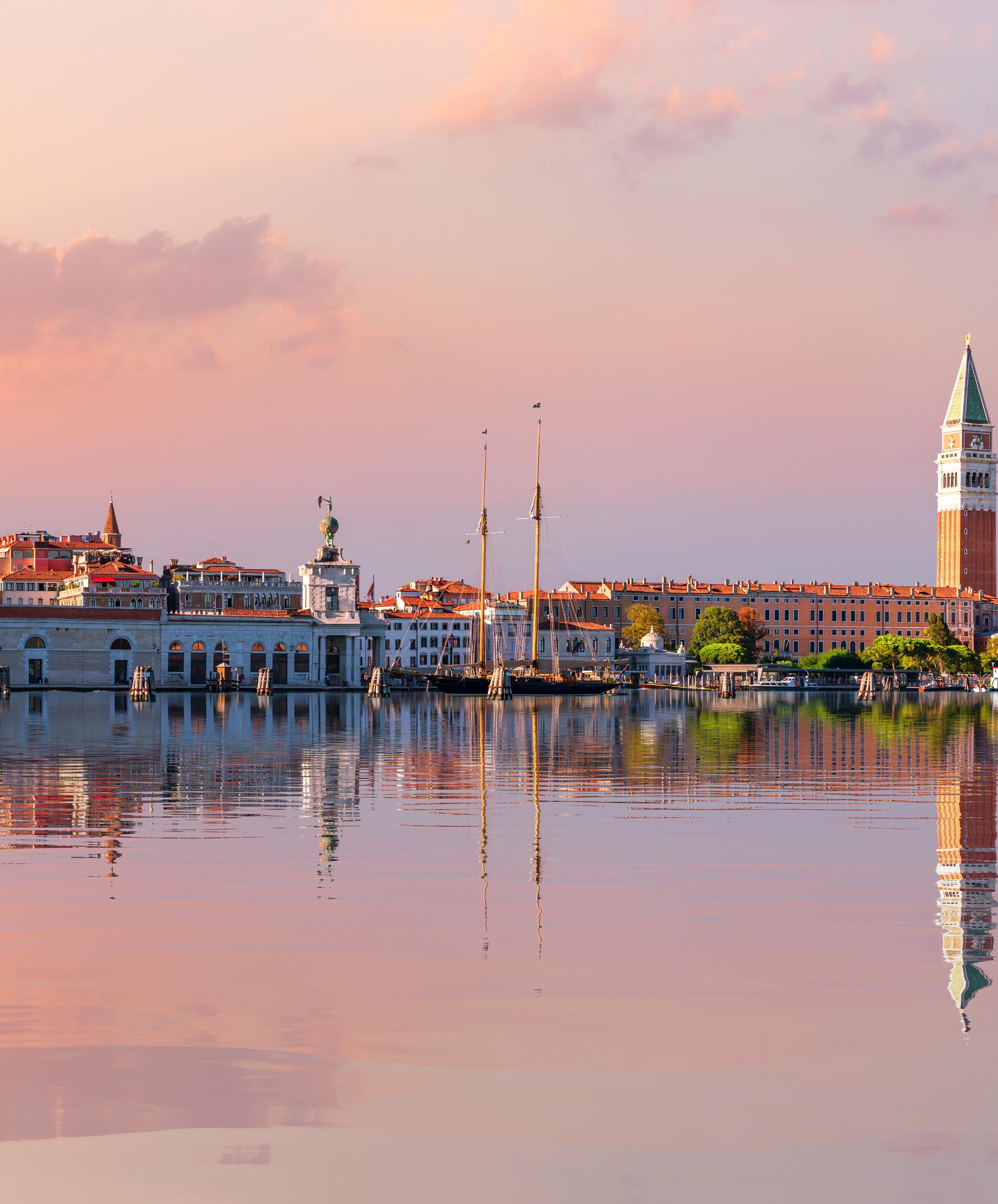
PLACES TO STAY
Hotel Cipriani | A Belmond Hotel
Giudecca 10, 30133
The Gritti Palace
Campo Santa Maria del Giglio 2467
Aman Venice
Palazzo Papadopoli Calle Tiepolo 1364 30125
WHERE TO EAT
Antiche Carampane - Seafood
Rio Terà de le Carampane, 1911, 30125
Ristorante Quadr - Modern
Piazza San Marco, 123, 30124
Ristorante Da Ivo
Piazza San Marco, 1809, 30124
James Tissot's reputation has so firmly come to rest on the artist's depictions of the stylish leisured class of the late-nineteenth century that the religious works of his late career - illustrations of the life of Christ - are little known. However, at the turn of the century, these biblical images were considered his greatest achievement due, on one hand, to the popularity of images from the Near East and, on the other hand, to the sense of immediacy Tissot gave to an age-old tale through uncompromising attention to detail.
The Journey of the Magi was created after the second of three trips that the artist made to Palestine between 1886 and 1896 to gather sketches and photographs of the people, costumes, topography, and light of the region.


Details:
Title - Journey of the Magi


Dated - c. 1894
Artist - James Tissot

Nationality - French
Artist Life - 1836-1902
Location: Gallery G357, Minneapolis Institute of Art


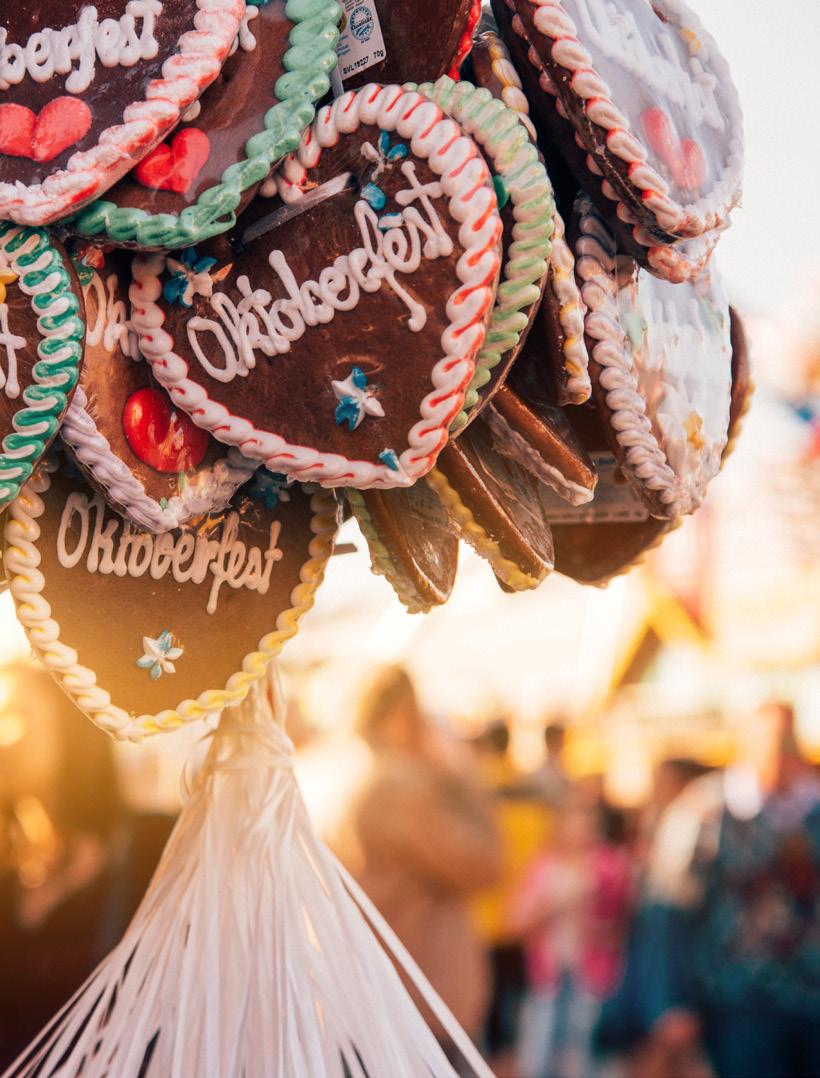

If you have ever been to an Oktoberfest celebration in Munich, you’ll understand its frivolity. A jam-packed hall full of long tables and benches, boisterous people raising beer mugs that need two hands to grip, a chorus of singing traditional songs, and everyone having fun! It is definitely a celebration!
This celebration is the largest folk festival in the world. It’s a piece of Munich's soul. It is a tradition that represents the Bavarian way of life and the hospitality of the people there.
It’s also the world's largest beer celebration and typically draws over six million visitors over its three-week run. Every year, these visitors consume at least 1.5 million gallons of beer and 200,000 sausages. And they party! Although the modern-day festival barely resembles its humble beginnings, the traditions that started it all remain alive.
The idea of Oktoberfest originated on October 12, 1810, as a royal wedding celebration between King Ludwig I and Crown Princess Therese of Saxony-Hildburghausen. The citizens of Munich gathered at the Theresienwiese (Therese's meadow), now known as the Wies'n, to attend the festivities and watch the horse races that highlighted the union. Since then, it has continued over the years and decades and centuries to have firmly rooted itself in the identity of Munich.
Traditionally, Oktoberfest begins with the official tapping of the keg in the Schottenhammel tent, the largest beer tent at the festival. The mayor opens the first keg and proclaims O’ Zapft is! (It's tapped!), marking the official start of the festival. Then, it’s off to the races!
Oktoberfest is often associated with beer. The original six Munich breweries still provide the beer for the festival. Fourteen beer halls and tents range in size from small to large. And some can even hold up to 10,000 people at a time. But it’s much more than knocking back brews.

People dress in traditional Bavarian clothing, dirndls, and lederhosen. Carnival rides provide entertainment for revelers, and you can find dozens of stands with traditional German cuisine. Tree climbing competitions and sack races are held. For many Germans, Oktoberfest is a celebration that offers a welcomed break from their daily routines and the opportunity to enjoy a beer and sausage in a community setting. It’s more about friends and neighbors than anything else.
They celebrate together while eating Hendl (whole roasted chicken), Blaukohl (a red cabbage and apple dish), Dampfnudeln (steamed dumplings), and Kaiserschmarrn (raisin pancakes) …..the traditional foods of the festival. They
raise a stein to Münchener Kindl, the Oktoberfest mascot and symbol of Munich's coat of arms since the 13th century. (Translated the term means Munich child.) They hum and sing along at the traditional brass band concert on the second Sunday of the event when bands from all the beer tents come together at the Bavaria statue and perform a concert conducted by the mayor of Munich.
On the last day of Oktoberfest, the traditional Böllerschießen (gun salute) takes place. At the stroke of noon, the members of the shooting club meet at the Bavaria Statue and mark the end of the celebration with gunshots from black-powder cannon pistols and rifles. The modern Germany Oktoberfest festival keeps old traditions alive while welcoming the new. For example, the music played at Oktoberfest is an eclectic mix of old and new.
Although Oktoberfest originates in Munich, the festival has inspired hundreds of similar events across the globe. Now, people come together from all different countries and cultural backgrounds to celebrate comradery, hearty food, and traditional beer.
Although Oktoberfest is celebrated in other parts of Germany, its heart is in Munich.

PLACES TO STAY
Mandarin Oriental Neuturmstraße 1, 80331 München
Hotel Vier Jahreszeiten Kempinski München Maximilianstraße 17, 80539 München, Germany
Hotel Bayerischer Hof Promenadepl. 2-6, 80333 München, Germany
PLACES TO EAT
Alois - Dallmayr – Modern Dienerstraße 14, Munich, 80331
Tohru in der Schreiberei - Japanese Burgstraße 5, Munich, 80331
Atelier - French Promenadeplatz 2, Munich, 80331






















 BY KRISTINA PHILLIPS
KRISTINA PHILLIPS INTERIOR DESIGN
BY KRISTINA PHILLIPS
KRISTINA PHILLIPS INTERIOR DESIGN
December is one of my favorite times of the year. It allows me to honor and celebrate my own Swedish heritage with the many traditions and decor this culture abides by during the Christmas season. In Sweden, it all begins four Sundays before Christmas and the beginning of Advent when a candle is lit to start the countdown. Often heirloom Advent sets are passed down, along with Swedish



On December 13th, we celebrate Lucia, a 400-year-old custom that commemorates the martyr Lucia of Syracuse. As legend has it, Lucia brought food to Christians hiding in Roman catacombs, lighting her way with a candle lit wreath on her head. When the fourth Advent candle is lit, Christmas Eve has finally arrived. Unlike in the States, Swedes open gifts on Christmas Eve, after Santa (Tompte) has dropped off his bundle and continues his way around the globe.
Swedish Christmas decor is centered on nature, along with plenty of candlelight and flowers. Christmas trees are dressed with ornaments made of balsa wood, straw snowflakes, felt angels, and the ever-important star tree topper. Julbocken - goats made of straw of various heights are often placed under the tree. My mother's hometown is famous for its annual burning of the Gävle Goat by pranksters. Special Christmas linens, usually red and white, are brought out to dress the table. In every Swedish home, lamps are lit in windows, creating a beautiful glow as seen from the outside. I love to decorate my dining room with a Christmas tree dedicated to Swedish Tomptes and there’s nothing like a Swedish smorgasbord to bring family and friends together!



There are many ways to decorate a Christmas tree, from over-the-top ornamentation to a minimalist organic 'bare' branch look. Swedes have a word - "lagom" - that defines much of their overall outlook. It is an expression for moderation or not too much, not too little. This way of thinking is carried through all aspects of life and holds true in getting homes ready for the holidays. Trees are often freshly cut and adorned with simple, naturally made ornaments such as straw stars, felted wool figurines, and paper cutouts or pieces made from carved balsa wood. Christmas tree skirts can be made from a rustic burlap to a chic buffalo check.
I take great pride each year in celebrating Christmas in Swedish style! My children have come to love and appreciate all the traditions that I enjoyed as a child. And our friends delight in being invited to our home to partake in the festivities.

In a world that moves so quickly and too often, and is used to moving “onto the next,” I love that December means a
wonderful mix of good memories, traditions, and celebrating Christmas with those I love.
Kristina PhillipsWith over a decade of interior design experience, Kristina Phillips brings an international flair to her design firm. Having had the good fortune to grow up in the Bahamas, Germany and France these experiences firmly shaped her design sensibility and continue to push her to bring culture, authenticity, and originality to all the spaces that she designs.
She comes from Scandinavian descent - the home of clean lines and simple design. Living in Germany she came to understand function versus form and a year in the South of France ignited a passion for searching for those special pieces that tell your home’s story. Spending the remainder of her formative years on the Eastern Shore of Maryland instilled in her an appreciation for Southern graciousness.

People around the world celebrate the New Year as the clock strikes twelve in their respective time zones. New Year’s Eve celebrations spread around the world like a wave.
The first region to celebrate the New Year is Kiritimati in Oceania. The small island, also known as Christmas Island, inhibits a time zone 14 hours ahead of Greenwich Mean Time. But the first major islands to reach midnight are parts of New Zealand, one hour later.
Although New Zealanders are among the first in the world to ring in the new year on December 31st, it’s always the second time each year that they celebrate the event. The first is in June/July with the native Maori holiday of Matariki.
John Eric Home recently had a conversation with Waitārehu Hoyle who shared with us this amazing holiday.
Matariki begins the Maori New Year. Can you tell us about the history and significance of the holiday?
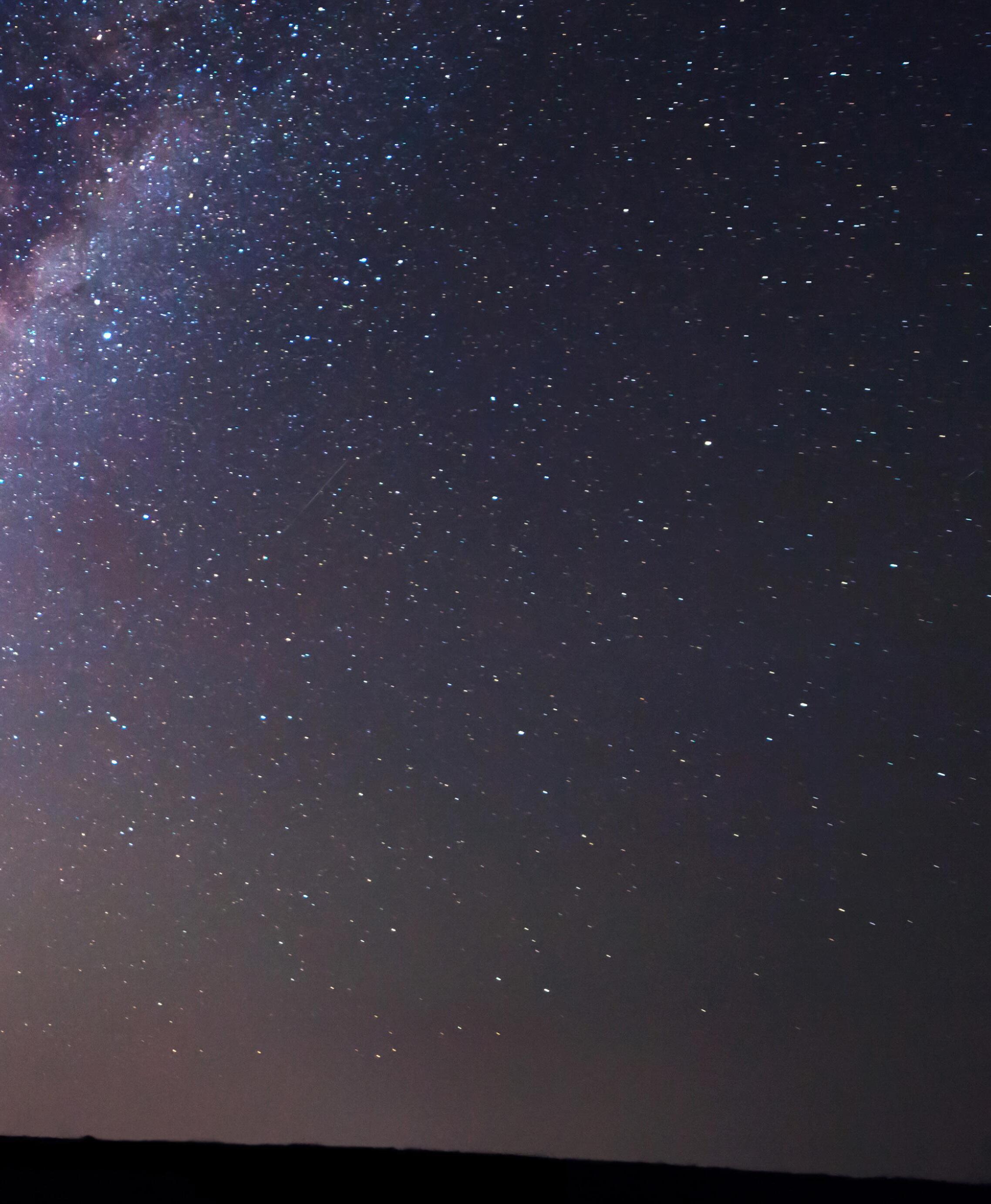
Matariki is a celestial event deeply intertwined with Māori cosmology. Its name can be translated to mean "eyes of god" (mata ariki) or "little eyes" (mata riki). The Pleiades star cluster, the celestial embodiment of Matariki, has nine stars, each carrying its own name and significance. In traditional Māori society, these stars served as navigational aids and agricultural calendars, with their brightness believed to foretell the abundance of the coming year's harvest. Matariki is celebrated at the first rising of the star cluster in late June or early July.
For Māori, Matariki is a tapestry of cultural significance that threads through time and space. It connects us to our tūpuna (ancestors), our whenua (land), and our spiritual beliefs. It's a focal point for our people, and each iwi (tribe) has its unique traditions and narratives.
During this time, we honour those who have left the physical world. By remembering them, we keep their spirit and teachings alive, allowing us to move forward with wisdom and love. It’s a beautiful blend of remembrance and renewal, creating a holistic cycle that resonates with many aspects of te ao Māori, the Māori worldview.
The increasing recognition of Matariki as a national holiday is a significant milestone in New Zealand's journey toward biculturalism and the acknowledgment of Te Tiriti o Waitangi, New Zealand’s founding document. Officially recognized in 2021, Matariki’s ascension to a national holiday status has provided the impetus for all Kiwi, irrespective of their background, to engage with Māori culture and values. This recognition is the result of years of advocacy and education, spearheaded by Māori leaders, astronomers, and cultural practitioners who worked hard to elevate Matariki from a cultural observance to a unifying national event. It opens doors for more extensive dialogues about indigenous knowledge systems, ecological awareness, and social unity—issues that are of ever-increasing importance in our modern world.
Māori beliefs insist on an underlying respect for nature. How does the celebration of Matariki reflect this belief?
Yes, Matariki is an expression of reverence for nature, and emphasizes our core principles like kaitiakitanga, or guardianship over the environment. In traditional Māori cosmology, the natural world is not an entity separate from humans; rather, we consider that we are an intrinsic part of it. Matariki is attuned to natural cycles. For example, her reappearance in the sky signals the end of harvest and the onset of a new planting season. And the brightness of the stars is regarded as a sign of abundance for the coming year’s harvest. Our people adjust their agricultural and fishing activities accordingly.
Traditional practices during Matariki, such as placing rāhui (restrictions) on certain natural resources, embody the concept of kaitiakitanga. These rāhui allow nature to rejuvenate and reflect an approach to environmental stewardship that is about balance and reciprocity rather than exploitation.
Matariki is also symbolic of the connection between sky and earth, linking Papatūānuku, the Earth Mother, and Ranginui, the Sky Father. We consider ourselves the children of Papa and Rangi, reminding us of our duties to maintain the balance between these realms. It's not merely an acknowledgment of the natural world but a celebration of its spiritual dimensions, including its own mauri or life force.


The Matariki cluster of stars is host to important legends. Can you speak on one or two of these legends?
I was raised on a beautiful pūrākau (legend) of Matariki that weaves together cosmology, environmentalism, and familial bonds in a uniquely Māori context. It encapsulates much of the wisdom that we have about the natural world, showcasing the interconnectedness of all things.
In this legend, Matariki is the whaea (mother) who cares for all, and her eight daughters assist her in this grand task:
1. Waitī: Guardian of all fresh waters—lakes, rivers, and streams. Waitī instills in us the value of freshwater ecosystems and encourages their care and preservation.
2. Waitā: Guardian of the sea and all that is within it. Waitā oversees our marine life and ocean tides, underscoring the importance of sustainable marine practices.
3. Waipuna-ā-rangi: Keeper of the skies, the rains, and the moisture. She nourishes the land, reminding us of the intimate connections between the heavens and the earth.
4. Tupu-ā-nuku: Guardian of edible plants and the nourishment that grows directly from Papatūānuku, the Earth Mother. Tupu-ā-nuku teaches us about the value of sustainable agriculture.
5. Tupu-ā-rangi: Keeper of the trees and the birds, this daughter asks us to care for our forests and our avian life, recognizing them as indicators of the wellbeing of our land.
6. Ururangi: Guardian of the winds, responsible for the different winds and breezes that help circulate life across Aotearoa. She helps us recognize the impact of climate on all living things.
7. Hiwa-i-te-rangi: This daughter is the keeper of our hopes, dreams, and aspirations. Hiwa-i-te-rangi encourages us to aim high, to seek out valuable goals, and to aspire to achieve them for the collective good.
8. Pōhutukawa: Often associated with those who have passed away, Pōhutukawa connects us to our ancestors and those who reside in the spiritual realm. This connection enriches our living world, reminding us of the cycle of life and death, and the continuity of existence.
Together with their mother, they complete the natural world, demonstrating how interconnected and interdependent each aspect is. This legend encapsulates the essence of respect for the natural world, portraying a holistic approach to environmental care and sustainability. The story serves as a yearly reminder of our duties and responsibilities during the Matariki celebrations.
When celebrating the holiday, do any of these legends play an important role?
Yes, absolutely. There are so many incredible events held throughout the country that speak to the legend of Matariki and her daughters. We have things like community storytelling events at marae and libraries; exhibitions and performances that bring the story of Matariki and her daughters to life; and educational workshops on traditional Māori knowledge. Many communities now organize eco-focused activities like tree planting that embody the teachings of Tupu-ā-nuku and Tupu-ā-rangi; and spiritual ceremonies, like candle-lit vigils and karakia (prayers) that focus on Pōhutukawa and Hiwa-i-te-rangi, connecting us to our ancestors and guiding our future aspirations. But what makes Matariki unique is its celestial aspect. Star-gazing events, guided by iwi experts, combine science with spirituality, helping us relate to each star's mythological importance. Many Māori will ascend their maunga (mountain) during this time to spot Matariki and her daughters.
the celebration of the Maori New Year?
Another fun tradition is kite flying. Kites are seen as connectors between the sky and the earth. When we fly a kite at this time, it's like we're sending our prayers, wishes, and messages up to our ancestors. It's a way to maintain strong family bonds and remember those who have passed away.
The designs on the kites often carry significance too. They can represent tribal motifs or family narratives, and that makes the act of kite-flying even more meaningful. It's not uncommon for families to come together to craft these kites, and that in itself becomes a way to pass down traditions and keep our cultural identity vibrant. Traditional kites are often made from natural materials like flax, tying back to the Māori principle of kaitiakitanga, which is all about guardianship and sustainable interaction with nature.
The heart of our Matariki celebrations is always family, or as we say, whānau. We gather around for a grand hākari, a shared feast that's as much about community as it is about the food. Before we eat, each of us talks about our aspirations and hopes for the coming year. But before we look forward, we pause to remember and honor those who are no longer with us, especially those we've lost in the last year.
As for next year, we're planning to rise early and view Matariki from one of our many beautiful maunga
(mountains). Returning to our maunga allows us to literally and figuratively touch the soil our ancestors walked on. It strengthens our bond to our history and our identity as Māori. A mountain isn't just a peak; it's a symbol of our collective stories, struggles, and triumphs. By climbing it, we're not just reaching a physical summit; we're also attaining a spiritual closeness to who we are and those who came before us. These pilgrimages are open and welcoming to everyone, both Māori and non-Māori. It's a remarkable opportunity to learn from experts in Māori culture and to connect with the land and its history.
Gosh, all of the above but also, Matariki is like a guiding star in my life, both literally and metaphorically. It's a time when I feel the past, present, and future come together in a beautiful tapestry. The past is there in the stories we share, the memories of loved ones, and the ancestral lands we reconnect with. The present is in the feast, the laughter, and the sense of community that we experience right then and there. And the future? Well, that's in the dreams and hopes we openly talk about, almost as if saying them out loud under the Matariki sky will help them come true. For me, Matariki also embodies the essence of my iwi, Te Aupōuri, Ngāti Kurī, and Whakatōhea. It's a time to honor our unique traditions and narratives. It gives me an immense sense of pride and grounding, reminding me of who I am and where I come from. But it's also a chance to look forward, to plan how I will contribute to my community and the wider world. It's a beautiful cycle of renewal that keeps me anchored while also encouraging me to reach for the stars, quite literally. So, Matariki means the world to me; it's a celestial anchor, a cultural cornerstone, and a personal compass all wrapped into one.
What is your most favorite part of the
My favorite part of Matariki is whānau, or family. But in Māori culture, 'whānau' extends beyond just blood relatives. It includes a wider network of community, mentors, and friends. During Matariki, this sense of an extended family really comes to life. It's a time when everyone—elders, young ones, and everyone in between—comes together to share experiences, from feasting to storytelling. It's this collective sense of belonging and interconnectedness, all under the Matariki stars, that makes the holiday so special for me.
Is there a personal story or anecdote from a past celebration of Matariki that you might be willing to share with our readers?
This year's Matariki held special significance for me and my husband. We'd spent the last three years in Rosslyn,
Virginia, a wonderful community that became an exciting chapter in our lives. However, due to the Covid-19 pandemic, we couldn't visit our whānau in New Zealand as often as we'd have liked. During that challenging period, the friendship and support from our Rosslyn neighbors became invaluable (we love you Amanda, Richard, Lindsey, and Nate!). They filled a void, reminding us that family isn't just about blood ties; it's also about the supportive communities you find along the way.
We returned to New Zealand in December 2022, and celebrating Matariki here in June 2023 felt deeply emotional. It was as if we collectively exhaled, finally relishing the joy and relief of being reunited with children and grandchildren. So this year, Matariki wasn't just about our reunion with our New Zealand whānau; it was also a time to think about our American friends who helped us get through the tough times abroad. It was a unique Matariki, made all the more memorable by the challenges and distances of the previous years.
What else would you like our readers to know about the holiday and its traditions?
If any Americans are considering a trip to New Zealand, I'd highly recommend planning it around Matariki. The experience is transformative, not just in a cultural sense but also in a deeply personal way. It's a poignant and beautiful time to be in New Zealand, whether you're enjoying a feast, listening to stories, or even climbing a mountain. The atmosphere is charged with a sense of community, remembrance, and shared hope for the future.
Matariki has a universal appeal that transcends cultural boundaries. It invites everyone to reflect, celebrate, and aspire, all while enveloped in the natural beauty that New Zealand offers. So if you're up for an adventure that enriches both the mind and the soul, Matariki is the perfect time for it. Please feel free to email me with any questions you may have. If I don’t know the answer, I can always forward it to someone in NZ who can help! Yes, we really are a small and connected country, and we LOVE welcoming Americans and sharing our beautiful country: wai.hoyle@waitarehu.co.nz
Also, if you’d like to find out more about Matariki, I recommend visiting this official Matariki site and this one about Matariki Festivals.
Waitārehu Hoyle is a New Zealander of Māori descent. She belongs to the iwi (tribes) of Te Aupōuri, Ngāti Kurī, Ngāti Kahu, and Whakatōhea. Waitārehu and her husband, Sam Hoyle, recently returned to New Zealand after three years living in Rosslyn, Virginia, and working for the NZ Police at the Embassy of New Zealand.
As a family company, we know exactly what goes into our high performance paints. We make eco-friendly paints in our own factory in the UK, using only the very highest quality ingredients. These are blended by our dedicated team who have been creating lovely paints in wonderful colours for generations.




Showroom opening this Fall: 9 East Putnam Avenue, Greenwich, CT 06830
Order free colour cards on our website.
littlegreene.us





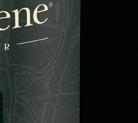









MILLIONS OF BOTTLES OF WINE AND CHAMPAGNE WILL BE SERVED THROUGHOUT THIS HOLIDAY SEASON. FOR THE 2023 SEASON, THESE WINERIES HAVE BEEN AWARDED AS THE “BEST OF” IN THEIR COUNTRIES. THE NEXT TIME YOU ARE IN THE REGION, STOP BY AND GRAB A BOTTLE FOR YOUR NEXT HOLIDAY CELEBRATION.
Oakridge Winery
Coldstream, Victoria (Yarra Valley)
This 45-year-old Yarra Valley winery crafts benchmark chardonnay, pinot noir, cabernet sauvignon, shiraz, sparkling blanc de blancs, and other varietals, under the guiding hand of highly talented and longstanding chief winemaker David Bicknell.
Bodega Catena Zapata
Mendoza, Argentina
This winery was voted number one in the World's Best Vineyards Awards for 2023. Founded in 1902, the oldest Argentine family winery is known for its pioneering role in reinventing Malbec.
Bodegas de los Herederos del Marqués de Riscal
Rioja, Spain
Founded in 1858, this is where the first ever Rioja wines were bottled, with the then Marquis’ first vintage in 1862. Marqués de Riscal is credited with introducing white wines to the nearby province of Rueda and assisting its elevation to DO status in the 1970s.
AFRICA
Creation
Walker Bay, South Africa
Swiss winemaker JC Martin and his South African wife Carolyn built and an estate from scratch, incorporating and highlighting its bounteous surroundings. The first harvest took place in 2006 and the couple’s combined viticultural pedigree, combined with a thoroughly modern approach to farming, winemaking, and hospitality, has turned Creation into an unmissable destination.
Jordan Vineyard & Winery
Healdsburg, CA | USA
Jordan’s iconic chardonnay and cabernet sauvignon wines are masterfully crafted by winemaker Maggie Kruse and her team. Varietals are subtle with hints of tobacco, leather, and loads of blackberries.

During this time of year, along with Thanksgiving, we have another truly American holiday celebrated. Kwanzaa! This holiday, celebrated throughout the month of December, was created by Pan-African activist and academic Maulana Karenga in 1966, as an indispensable method to preserve, continually revitalize and promote African American culture.
• Kwanzaa is observed for seven days, and there is a different value for each day. On each night, a candle is lit to observe the nguzo saba, the seven principles of Kwanzaa. The principles of Kwanzaa are: Umoja (unity), Kujichagulia (self-determination), Ujima (collective work and responsibility), Ujamaa (cooperative economics), Nia (purpose), Kuumba (creativity), and Imani (faith).
• The candles include one black, three red, and three green. The colors red, black and green are important to Pan-Africanists. Black represents "the people" while red is for the blood spilled in the struggle for liberation and green is for the future of black liberation.
• Kwanzaa is a secular holiday. It draws influence from a variety of African cultures and practices. The holiday avoids theological emphasis, for it is this emphasis that reveals and cultivates differences. What Kwanzaa does is to stress the ethical which brings forth the best of African and human thought and practice and offers a basis of common ground.
• Kwanzaa is open to people of other cultures. Anyone is welcome to celebrate the holiday, comparing it to
other cultural holidays. It is often celebrated along with Christmas. In the holiday's early years, it was frowned upon to celebrate Kwanzaa and Christmas. As it became more popular, participants began to observe both holidays.
• Although Kwanzaa is often observed with Christmas and resembles Hanukkah in format, the dates have a different origin. A central model for Kwanzaa is umkhosi or the Zulu first-fruit celebration which is seven days and is celebrated during this time period. The first-fruit celebrations were celebrated at the end of the old year and the beginning of the New Year.

• At the end of the week there is a spectacular feast. On the seventh night, gifts are exchanged. Handmade gifts are preferred, and the items must relate to the principles. Typically, children are the primary recipients. The gift exchange must always include a book and a “heritage symbol,” or item that represents African history and traditions. Kwanzaa concludes with a feast called the karamu. Hosts are encouraged to display their most beautiful art and African cloths along with fresh fruit and vegetables.


INGREDIENTS
8 oz (230g) wheel of brie
2 tbsp. (30ml) fig jam
1 teaspoon (5 ml) fresh rosemary, minced
2 dried figs, sliced
1 tbsp. (15 ml) of pecans, chopped
1 baguette, sliced and toasted
2 bunches grapes
DIRECTIONS
Slice the baguette into thin slices and place on a baking sheet. Place under the broiler until toasted, and then flip until toasted on the other side. Remove from oven and set aside to cool.
Place brie in an oven-safe dish, a 6” (15cm) Lodge Skillet works perfectly!
Spread jam on top, add rosemary, dried figs, and pecans.
Place in preheated 375F (190C) for 15 minutes.
Place on a serving platter, add grapes and toasted baguette!

INGREDIENT
1 bone-in leg of lamb (6 to 8 pounds), trimmed
2 garlic cloves, minced
1/2 teaspoon dried thyme
1/2 teaspoon dried marjoram
1/2 teaspoon dried oregano
1/4 teaspoon salt
1/8 teaspoon pepper
1 teaspoon canola oil
DIRECTIONS
Preheat oven to 325°. Place lamb on a rack in a shallow roasting pan, fat side up. Cut 12-14 slits 1/2 in. deep in roast. Combine garlic, thyme, marjoram, oregano, salt and pepper; spoon 2 teaspoons into the slits. Brush roast with oil; rub with remaining herb mixture.
Bake, uncovered until meat reaches desired doneness (for medium-rare, a thermometer should read 135°; medium, 140°; medium-well, 145°), 2 to 2-1/2 hours. Let meat stand 15 minutes before slicing.

1/2 cup chopped dried apricots
1/2 cup amaretto
1 package devil's food cake mix (regular size)
3 large eggs, room temperature
3/4 cup water
1/3 cup canola oil
Filling:
2/3 cup apricot preserves
1 tablespoon amaretto
Glaze:
1 cup heavy whipping cream
1/4 cup light corn syrup
12 ounces semisweet chocolate, chopped
4 teaspoons vanilla extract
1 cup toasted sliced almonds, optional
Preheat oven to 350°. Combine apricots and amaretto; let stand for 15 minutes. In another bowl, combine cake mix, eggs, water, oil, and apricot mixture. Beat on low speed for 30 seconds, then beat on medium for 2 minutes.
Pour into 2 greased and floured 9-in. round baking pans. Bake until a toothpick inserted in the center comes out clean, 22-27 minutes. Cool in pans for 10 minutes before removing to a wire rack to cool completely.
For filling, heat apricot preserves and amaretto on low in a small saucepan, stirring occasionally, until preserves are melted; set aside.
For glaze, combine cream and corn syrup in a small saucepan. Bring just to a boil. Pour over chocolate; whisk until smooth. Stir in vanilla.
Using a long-serrated knife, cut each cake horizontally in half. Place 1 layer on a serving plate; spread with half of the filling. Top with another layer; spread with a third of the glaze. Cover with a third layer and the remaining filling. Top with the remaining layer; spread the top and sides of the torte with the remaining glaze. If desired, spread toasted almonds on the edge or side of the torte. Refrigerate for several hours before slicing.
 by Charles M. Tappan, Jr.
by Charles M. Tappan, Jr.
Glassware: Chilled Cocktail Glass
Ingredients:
1.5 oz. Half Shell Vodka
1 oz. White Crème Cacao
.5 oz. White Chocolate Syrup
1 Egg White (approximate 1 oz. in volume)
Garnish: Vanilla Extract Drops
Directions: Combine all ingredients with ice into a cocktail shaker and shake super strong until the shaker is completely frosted over. Strain out the ice, and then shake the drink dry (with no ice) for a quick 20-count. Strain into a chilled cocktail glass, garnish, serve and enjoy.
Every holiday has its traditions, and every tradition has its treats, and often those treats include some form of chocolate. Instead of dark chocolate, this bustling beverage begins with white chocolate; slightly savory, yet satisfyingly sweet and delicious. A simple white chocolate syrup is available in almost every main grocery store across the country. To hold the flavor, yet provide an adult kick, vodka is the perfect companion. To up the ante, Crème Cacao (chocolate flavored liquor) and egg white create a delectable that liquefies the holidays into a glass. Light, fluffy, chocolaty, and a whole lot of Boozy are exactly the “Treats and Traditions” that are called for during the holidays all over the world.
*If working with egg whites is a concern, then other options such as heavy cream or aquafaba (the liquid that chickpeas rest in in a can) can be used.

Glassware: Glass Mug
Ingredients:
1.5 oz. Tinkerman’s Citrus Supreme Gin
2.5 oz. Earl Gray Tea (chilled)
.5 oz. Crème Cassis
.25 oz. Honey Syrup
.25 oz. Lemon Juice
Garnish: Lemon Wheel
Directions: Combine all ingredients into a cocktail shaker, fill with ice, and shake to a slow 13 count. Strain over ice into a tall glass; garnish, serve and enjoy!
Holidays, like a great cocktail, bring people together. This beverage takes inspiration from the unique holiday, Guy Fawkes Day. Instead of an explosion, this potent potable enlists a classic drink style to ease the day down. As many holiday cocktails do, this beverage takes the form of a classic punch. For the base, gin comes to play. To make this a memorable holiday, a citrus gin is called for. The flavors set the tone to help meld and develop the additional flavors, much as a great table setting does for a holiday meal. Sweet, sour, and tartness are added through the flavors of currant (crème cassis), honey, and lemon. Finally, Earl Gray tea rounds out the drink in a calming fashion, settling the flavors, and mixing the tones. This holiday season don’t make a Fawkes Pas. Instead, raise a glass and enjoy the evening with a great classical punch that can even go with tea and scones the next day!
*Honey syrup - combine equal parts honey and hot water and stir till properly integrated.

Glassware: Rocks Glass
Ingredients:
1.5 oz. Olmeca Altos Anejo
.5 oz. Apple Brandy
.25 oz. Honey Syrup
3 Dashes Regan’s Orange Bitters
Garnish: Orange peel
Directions:
Stirred – Strain over ice into a rocks glass Day of the Dead has become more than just a local cultural tradition. Pictures, presents, flowers and offerings of food and drink adorn celebratory sites throughout the world. One of the most common offerings in Mexico, Tequila, makes a great spirit of choice to sip and reminisce about friends and family past. Here, anejo (old) tequila sets the tone of conversation. The barrel aging of the highland Olmeca Altos anejo brings forth notes of vanilla, citrus and baking spice, an incredible recipe for a seasonal starting point. Apple brandy becomes a stellar accomplice of the light floral flavors that come from both a highland tequila and agave spirit made with the traditional Tahona method. Rounding the cocktail out, some finishing touches of honey syrup and orange bitters are added, just like an old friend adding in a few “forgotten” pieces of a family memory. This holiday season, celebrate Day of the Dead and raise a glass to good memories, and “Old Friends” and family.
*Honey Syrup: Combine equal parts honey and hot water and stir till fully mixed.
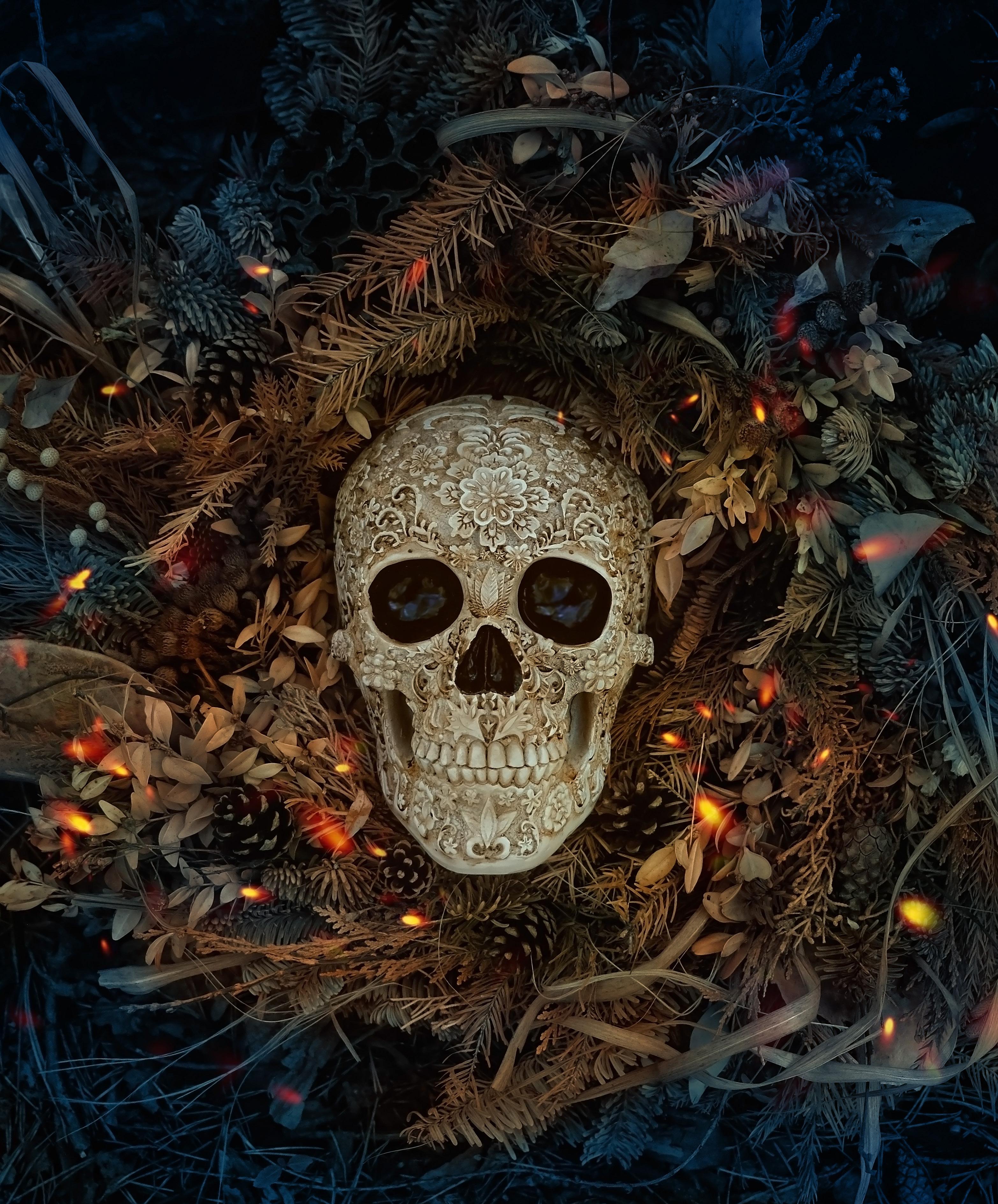
On the evening of every October 31st millions of children around the world dress up in costumes and comb neighborhoods in search of treats on Halloween. However, this holiday is neither rooted in Reese’s Cups nor fun-size Snickers bars. American Halloween is a tradition that Irish immigrants brought to its shores many moons ago. IIts origin is found in the ancient Celtic tradition of Oíche Shamhna and Samhain, Hallowe'en, which is still celebrated all over Ireland with feasting and games still on October 31st.
Samhain is observed together from sunset on October 31st to sunset on November 1st. The holiday was first observed to mark the Celtic New Year, the end of summer, and the end of the harvest season. It also signaled the beginning of winter, which they associated with death. On this day, the Celts believed the veil between the living and the dead was especially thin. This allowed spirits of the dead to visit the living.
Pagan traditions have continued to evolve in modern times. Customs such as trick or treating – known as guising in Ireland –are based on the Celtic tradition of wearing costumes and masks to disguise themselves from harmful spirits. Mumming is an activity where members of the community host door-to-door amateur theatre skits. In cities like Dublin and Galway, festivalgoers join parades, costume parties, and spooky street performances. The famous Bram Stoker Festival in Dublin honors the Irish author of Dracula, and the Derry Halloween Festival transforms the city into a Halloween wonderland.
Ireland is a land of legends and fairytales and mystical beliefs. It is no wonder then that this night is so wrapped in superstition. It is a night of magic.
Both the ancient pagans and their modern descendants – Wiccans -- believe(d) that on this night a Cailleach (a goddess of the winter months) arrives to strip leaves from trees, to quicken the decay of the flesh of the year, so that new life may come. They ask her to fly away taking the unwanted aspects of the previous year so that it may be transformed into something new.
Another ancient Celtic belief practiced is the carving of Jack-o-lanterns. These pumpkins are believed to serve as beacons for departed spirits to return home for visitation on this night. The carving of the pumpkin’s face is necessary to keep unwanted and evil spirits at bay.
Along with Jack-o-lanterns, Irish homes are filled with vestiges of Autumn. Acorns, dried leaves, pinecones, gourds, and dried flowers are used to decorate for the holiday. Homes glow with candles as cinnamon scents the house.
And food? Popular Samhain foods include pumpkin pie, apples, cider, roasted meats, root vegetables, pears, and dark wine. Hosting a big feast to celebrate – potluck style is also common. The traditional offered dinner is boiled potato, colcannon, cabbage, and raw onions, while the traditional Halloween cake – barmbrack – is a fruit bread. Each member of the family gets a slice. Hidden within the bread are a coin, a ring, and a piece of rag. The person who gets the rag has not a bright financial future for the year, while the person who receives the coin does. The ring, of course, indicates romance in the offing.
The American tradition of Halloween with its Trick-or-Treating and ghoulish stories has been exported to the world's four corners, including Ireland. From Ireland to America, and back to Ireland again. But in Ireland, the holiday is a bit of a mash-up between the old and the new. (Unless of course. You are a modern pagan!)

In Ireland, two hills in the Boyne Valley, Tlachtga, and Tara, are associated with the ancient beginnings of Samhain. But the best place to observe the holiday is in Derry, Northern Ireland.

PLACES TO STAY
Roe Park Resort
40 Drumrane Rd, Limavady BT49 9LB (United Kingdom)
Redcastle Hotel
Moville, Inishowen Peninsula
County Donegal (Republic of Ireland
PLACES TO EAT
Browns Bonds Hill - Irish/European
1 Bonds Hill, Derry BT47 6DW
Fitzroys – Irish/European
2-4 Bridge Street, Derry BT48 6JZ
The Sooty Olive Restaurant – Irish/European
160-164 Spencer Road Waterside, Derry BT47 6AH



Christmas is a particularly magical time for little ones hoping for a visit from Santa - but why make them wait for Christmas Eve when you could go directly to see the big man himself?
Lapland is in the north of Finland, on the Arctic Circle - so unsurprisingly, it boasts plenty of snow-covered landscapes. It is a winter wonderland, packed with fun and exotic things to do. Of course, its main attraction is its claim to Santa Claus who resides there with Mrs. Claus, his elves and reindeer. But it's not all about Father Christmas and his elves. In fact, there are plenty of incredible things to see and do.


Ever wondered how it feels like to be pulled on a sled by huskies or reindeer while enjoying the fairytale-like Lappish surroundings? Visiting in the winter, you can satisfy your curiosities.
Both husky and reindeer excursions are common activities in Lapland, and they are frequently organized throughout the populated areas. Whether opting for a short ride or a longer journey over tens of kilometers accompanied by traditional lunch and hot beverages, a reindeer safari or an exhilarating husky expedition in Lapland will offer you the chance to explore the frozen wilderness and soak up a bit of the local culture.
Levin Lapinkyla is a traditional farm in Lapland, where guests can immerse themselves in enchanting Finnish culture and traditions. Attractions range from smoke saunas and reindeer rides to wonderful restaurants and cafés serving authentic Lapp delicacies in a charming, traditional atmosphere.
Levin Lapinkyla’s highlight, however, is its domestic animal farm teeming with alpacas, reindeer, sheep, goats, bunnies, gerbils, guinea pigs, and all kinds of birds. They also offer accommodations in modern glass-roof huts designed especially for Northern Lights viewing.


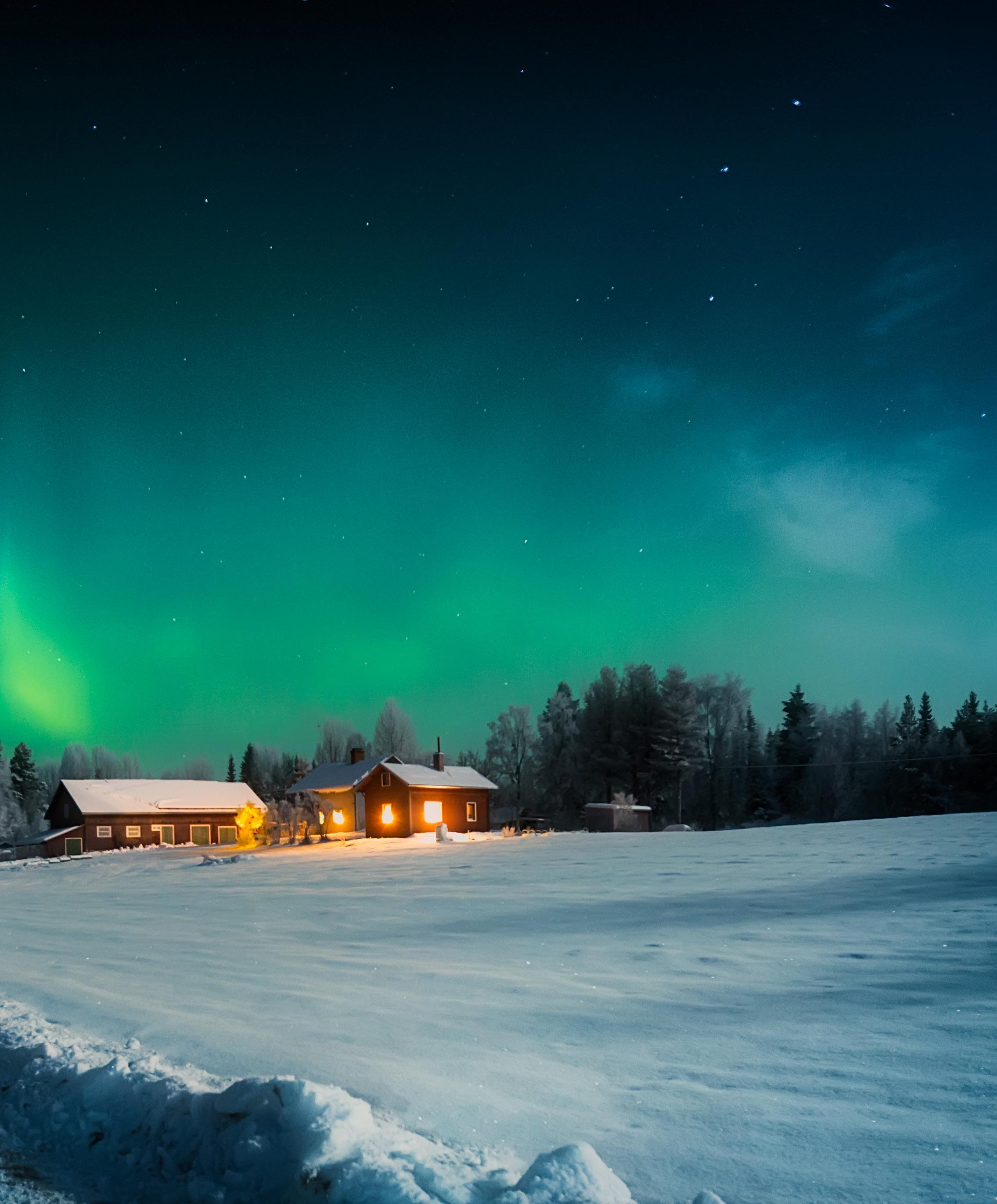

Beautifully located on the bank of River Ounasjoki, Arktikum is not only one of Rovaniemi’s (the capital of Lapland) main cultural spots but also the 4th best travel attraction in Finland. The attractive museum displays the history and culture of Finnish Lapland and the Arctic region, offering comprehensive information about the locals’ lifestyle, folklore, and traditions, from prehistoric times to the present day.
Brimming with alpine vegetation, the scenic Arktikum Beach Park nearby makes for a great spot to observe the Aurora Borealis during the winter months.
Often considered a landmark of Finland, the sauna has always been used for bathing and relaxation in this part of the world. But while many countries have embraced and modernized this practice, for Finns, it has remained the same sacred custom deeply rooted in their culture.
In Finland, saunas dominate the scene. They are found in local homes and cottages, in hotels and in public places. For the ultimate sauna experience though, one should try the one and only Ylläs’ sauna gondola – an amazing 2-hour experience that allows you to admire the breathtaking snow-capped surroundings from a special gondola equipped with an electric sauna.

Set amongst magnificent scenery, nearly 200 km above the Arctic Circle, it’s no wonder Lainio Snow Village offers visitors such an authentic Lappish experience. Built entirely of snow and ice, the village features a wonderful ice hotel, a stylish ice bar and restaurant, stunningly lit snow and ice sculptures, as well as all kinds of snow slides for the delight of children.
We have saved the best for last! No trip to Lapland is complete without a visit to St. Nick – the biggest reason why visitors flock to Lapland. After all, this is Santa’s only official home and a unique experience in its own right. It lies on the Arctic Circle, 8 km north of Rovaniemi, and can be reached through a 30-minute bus ride from the city.
Highlights include the Santa Claus Post Office, where children are welcomed with tons of Christmas-related items, as well as the official Santa Claus’ Office – the place where visitors can actually meet Santa. Another special attraction here is the white painted line that marks the Arctic Circle. Additionally, the village plays host to a wonderful variety of restaurants, souvenir shops, and colorfully lit ice sculptures. Situated within walking distance from Santa Claus Village, Santa Park is an underground amusement park and one of the most popular tourist attractions in Rovaniemi. The Christmassy theme park welcomes guests with fascinating attractions and activities, including entertaining sleigh rides, stunning ice galleries, and all kinds of family-friendly workshops and elf shows. Additionally, the facility plays host to an ice bar, a special Christmas carousel, and Mrs. Gingerbread’s famous kitchen, where the little ones can decorate cookies in a cozy, convivial atmosphere.
All in all, this winter wonderland treat may cost a bit, but it’s a once-in-alifetime experience that the family will never forget!
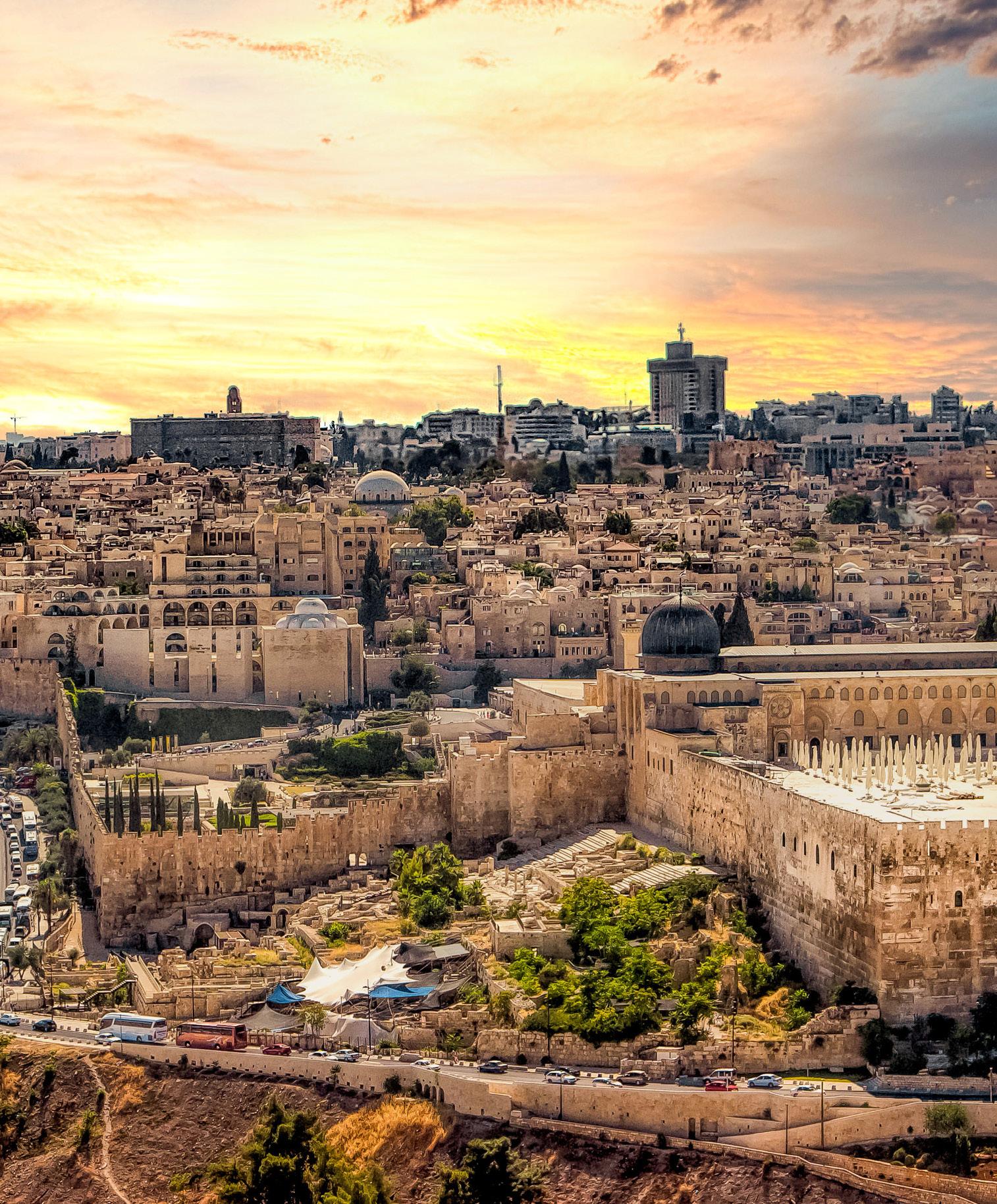
For Christians around the world, Bethlehem is the most revered site on earth to celebrate Christmas. And there is no better place in the world to mark Christmas Eve than in Bethlehem, standing in the same place where Jesus Christ was born.

The birthplace of Christ is only a bus or taxi ride away from the Old City of Jerusalem within the West Bank. While most will never travel to Bethlehem to celebrate Christmas, for those who do, the experience will be that of a lifetime. Bethlehem has a large Christian community and Christmas is celebrated like a city festival. There are lights and decorations everywhere, Christmas songs ring out through the streets, and a huge Christmas tree is erected in Manger’s Square.
Of course, the main draw happens to be the Church of the Nativity. Many visitors aspire to attend Midnight Mass there, and there are usually many VIPs, such as the Palestinian leadership, in attendance. Security measures around the church are very high and it can only be entered with a scarce pre-booked entrance ticket. In addition, dress is conservative. No shorts, skirts, tanks, or exposing any body parts that would be considered inappropriate. For those who manage a ticket (and are dressed properly), the site of Jesus’ birth is found in the basement of the Church, in the area known as the Grotto of the Nativity. Here, a boisterous crowd waits for admission into the Grotto, singing and clapping, An Orthodox priest guards the Grotto’s entrance and adheres to the strict rules of entry. The wait to get into the Grotto can be an hour or more. But it is well worth it.
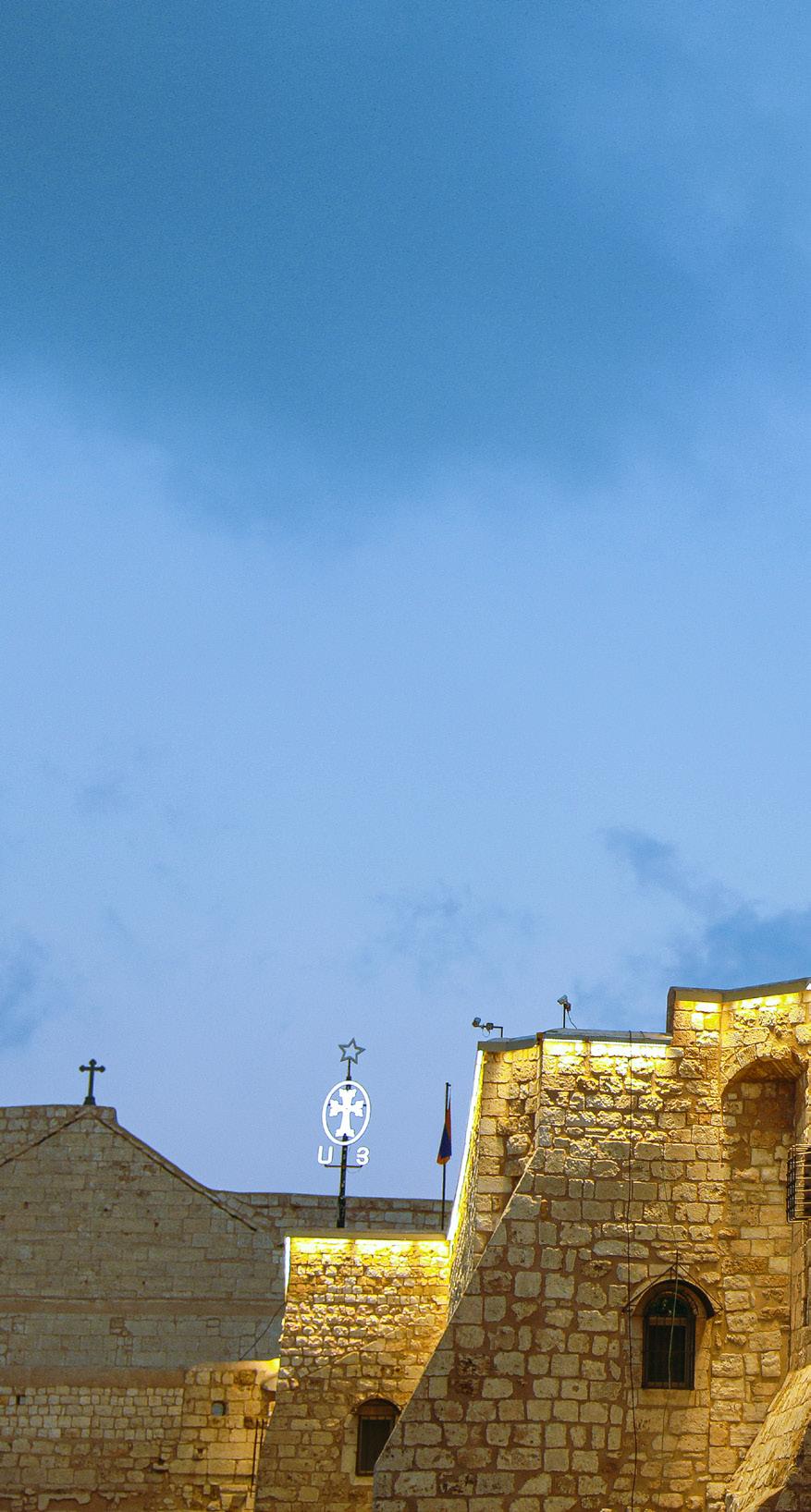


Once past the guard, steep stairs lead down into the cave, where the manger was located. Jesus’ birthplace is marked with a star. Here is one of the most holy sites in the Christian religion. And, from where Christmas sprang.


For those who are unable to acquire a ticket, there is another option to celebrate the Christmas mass. At Sheperds’ Fields in Beit Sahour (just east of Bethlehem), small international groups celebrate mass outside in the fields. It’s a connected experience to walk around and listen to all the talking and singing of the Christmas traditions in different languages.
Next to the Shepherds’ Fields is a restaurant called “The Tent.” On Christmas Eve, it’s full of locals who celebrate Christmas with their friends and family. Eating great Palestinian food and singing and dancing with locals is an amazing way to also celebrate the holiday.
Observing Christmas in Bethlehem is an experience that is treasured. It brings even more meaning to a solemn and joyful holiday.
If you are blessed to celebrate Chritmas in Jerusalem here are some wonderful place to stay and eat.
PLACES TO STAY
King David Jerusalem
23 King David Street, Jerusalem 94101
Waldorf Astoria
Gershon Agron St 26-28, Jerusalem 9419008
Mamilla Hotel
Shlomo Ha-Melekh 11 Street, Jerusalem 94182
PLACES TO EAT
Atalya
9a Ein Kerem, Jerusalem 9574409

Happy Fish Restaurant
Mamilla Hotel, Jerusalem 94182
Margo
Mamilla Hotel, Jerusalem 94182

When did you last step outside of your comfort zone?
When did you last experience that uncomfortable sensation in the pit of your stomach that leaves you questioning your decisions and fighting the urge to quit and walk away?
by Hannah JennerIt feels like a very unnatural thing to deliberately set yourself up to feel that fear, of being able to live up to the moment or succeed in a task you are not sure you have the skill or stamina to complete. The human race is, after all, hardwired to avoid discomfort and seek pleasure. It’s probably a big part of the reason we have thrived as a species. It is also why we are so easily drawn to consume things like sugar and spending a day on the couch rather than running a marathon. Comfortable is nice. Comfortable is easy. Comfortable feels safe. But therein lies the question - is it in fact “safe” to exist purely in your comfort zone?
While feeling and indeed being safe is a fundamental facet of good health, choosing to avoid the discomfort of testing the waters outside of your comfort zone could mean that you miss out on the opportunity to be fitter, stronger, faster, more knowledgeable, wiser, and even healthier.

The curiosity to discover what is possible is what has driven humans to achieve seemingly impossible feats of tenacity and endurance. But we can also scale that way back and consider that being willing to lean into discomfort has led to someone’s first class at the gym, first 5K run, and first taste of a previously avoided ‘healthy food’.
The return on investment is unlikely to be immediate but that is part of the process. Think of a time -- no matter how great or seemingly small -- when you felt that sensation of being in an environment that you were both intrigued by and slightly scared of. What exactly did you feel? Where did you feel it? If you achieved whatever it was that made you feel this way, how did you feel after? What did you feel? Even if the experience wasn’t all that enjoyable there is still the accomplishment of walking away with knowledge.
We have an incredible capacity to learn and grow. The more we challenge ourselves, the more we become curious about what else we can achieve and how we can do things or use our bodies and minds more efficiently and effectively. That first class at the gym may have felt truly intimidating and left you winded and in a state of shock, but perhaps from that came significant improvements in health and fitness. Then some gradual but notable lifestyle changes. From there, an adventure that might not have been possible if it wasn’t for the willingness to lean into discomfort, to lean away from feeling “safe.”
If you are at all curious about your potential as a human being, then it is essential that you are curious about leaning into discomfort. It is of course imperative to distinguish between actual pain (physical or emotional) that most definitely signals that you should stop and feeling uncomfortable, which is not a reason to walk away. Maybe you have heard or even said to someone who seems willing to test their limits “Oh, it’s easy for you” but is that simply a reason to justify an easy exit? While the degree of discomfort may differ, it is never easy to challenge yourself no matter who you are. It takes practice. Start small and every time you allow yourself
to be okay with being outside of your comfort zone and you survive that experience, check in and ask “What can I take away from it? What did I learn?”
People do extraordinary things every single day. Maybe that is climbing the world’s highest peaks or running ultra marathons, but maybe it is as epic as making a choice to start the journey towards a healthier lifestyle. Whatever the challenge, trust that you are capable. Even if you don’t succeed the first time, remember you gained knowledge, and that knowledge can empower you to try again until you achieve your goal.
Silver and Gold and Red and Green and Blue.
Many cultures believe that wearing specific colors is auspicious when celebrating holidays. These colors play a significant part in the holiday itself. Think red and Lunar New Year celebrations. The new year is now upon us – to ring it in both with style and good vibes, add one of these hues to your New Year’s Eve ensemble…
Silver is a motivational color as it is believed to provide clarity and strength. It’s aligned with the color of the moon and brings personal and emotional transformation.
Gold is the most auspicious color representing wealth and royalty. Add a splash of gold or go big on New Year’s Eve in full golden garb to bring all sorts of fantastic things into your life.
Blue is known to bring good vibes. It signifies loyalty and positivity and is said to be especially auspicious when it comes to career. It is also thought to boost intuition and well-being.
Red is the color of passion and desire and is believed to harness the ability to put goals into action. Welcome the new year with gusto.
Green – particularly emerald – is believed to attract prosperity and abundance. If you’re longing for a boost in your bank account or hoping for extra cash to spend in 2024, your wishes may come true by slipping on different shades of green.



When planned correctly, a horror movie marathon can alleviate some of the anxiety you experience on a daily basis, according to Michelle Cutler, an associate professor of clinical psychology at The Chicago School of Professional Psychology.
This is due to a neurobiological response that comes when we do something that's scary, especially if it's done in a community with other people. A rush of adrenaline, endorphins, and dopamine translates into feelings of euphoria and satisfaction or even empowerment once that fear subsides. (NBC 4)
The traditional Veteran’s Day observance will be held at Arlington National Cemetery on Saturday, November 11th. The ceremony commences precisely at 11:00 a.m. with a wreath laying at the Tomb of the Unknowns and continues inside the Memorial Amphitheater with a parade of colors by veterans' organizations and remarks from dignitaries. (ANC)

Butterball, the best-known brand of turkey in the U.S., released its annual Thanksgiving Outlook Report, revealing consumer plans and sentiment with the holiday less than three months away. According to the findings, people are optimistic, but inflation is top of mind for many.
According to the report, 89% of consumers plan to host or attend a celebration of the same size or larger this year with the anticipated size of celebrations set at 9 people. 83% of those planning to celebrate Thanksgiving associate the holiday with family; 74% associate it with togetherness. Also, the findings show that turkey remains the most popular part of the meal, followed by stuffing, pie, and then potatoes. (Perishable)
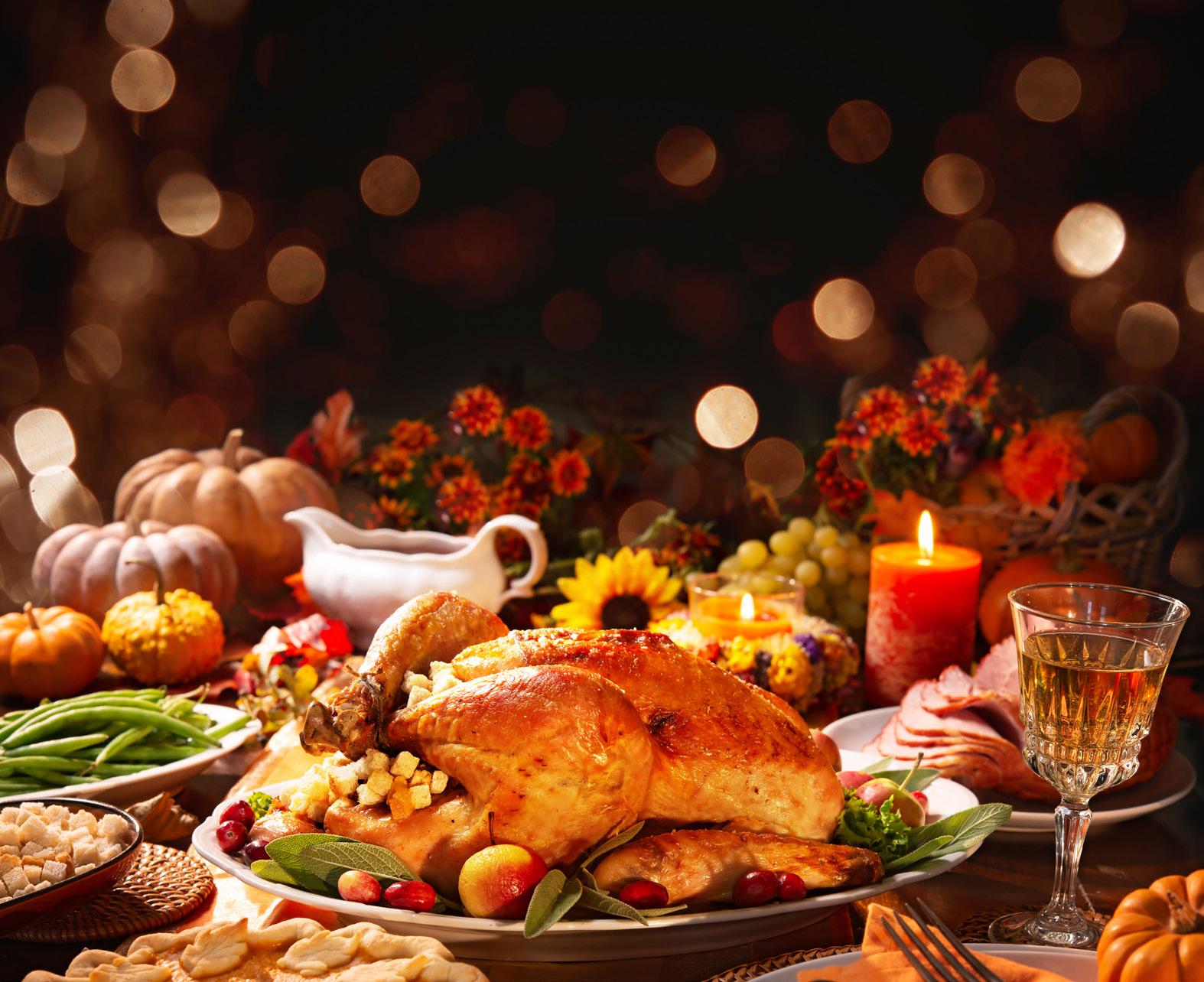
The colorful glow of Washington, D.C.’s beloved Smithsonian’s National Zoo holiday tradition has returned. Thousands of visitors make ZooLights a part of their annual holiday tradition.

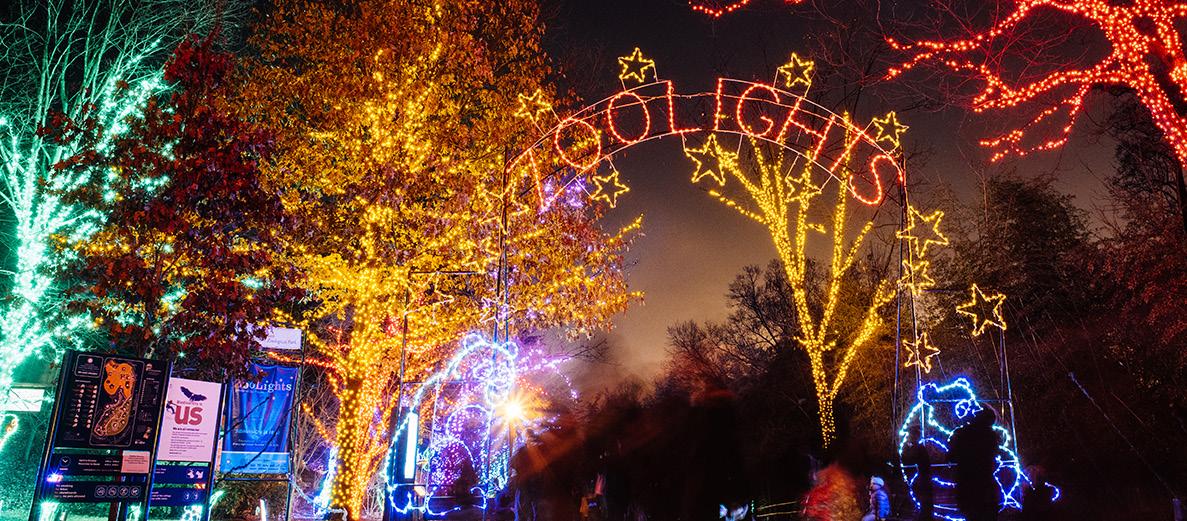
Environmentally friendly LED lights and dozens of glowing animal lanterns transform the Zoo into a winter wonderland. Live music performances and plenty of fall treats make this annual presentation a local’s favorite.
WEEK 1 | Nov. 25, 26, 27 | Friday to Sun.
WEEK 2 | Dec. 2, 3, 4 | Friday to Sunday
WEEK 3 | Dec. 9, 10, 11 | Friday to Sunday
WEEK 4 & 5 | Dec. 16, 17, 18, 19, 20, 21, 22, 23 | Friday to Friday
WEEK 6 | Dec. 26, 27, 28, 29, 30 | Monday to Friday
ZooLights does not feature the Zoo’s animals. All indoor animal exhibits will be closed to allow animals to get a full night’s rest. The last admittance to ZooLights is at 8:30 p.m.

The Gallery's long-standing tradition of community caroling in the West Building Rotunda is a favorite family activity during the holidays. Groups perform their own music as well as lead the audience in familiar Christmas carols. Performances last 45 minutes; singers and spectators of all ages are welcome. The following groups will lead caroling this year:
Capitol Hill Chorale
December 7 at 1:30 p.m. and 2:30 p.m.
Xaverian High School, New York
December 14 at 1:30 p.m. and 2:30 p.m.



The Greystone Estate is a collection of seven unique structures – six of which are residences of varying sizes – located on 55 acres of some of the most pristine mountainland in Colorado. As some would describe it, it’s a family compound located hidden from view behind a private gate and located just 30 miles from the City of Denver.
“I would describe it as more of a union of the seven buildings, with each serving a unique purpose and operating in concert with the others,” says Stan Kniss, the listing agent for the property. “There truly is nothing else like it. The history, the architecture, and the land all combine to create a legacy property that cannot be recreated.”
Its history is certainly unique. In 1914, Genevieve Chandler Phipps decided she had spent enough time traveling and living in hotel suites. Her father, C.H. Chandler, had been a top executive at the Pittsburgh Plate Glass Company and a key developer in the “White City” Amusement Park in Bellingham, Washington. After his death in 1910, he bequeathed a substantial inheritance to Genevieve, his only child.
This inheritance, added to the lofty stipend she received annually from the 1904 divorce settlement with ex-husband and steel mogul, Lawrence Cowle Phipps (later Colorado Senator from 1918 to 1931), made 34-yearold Genevieve an extremely wealthy woman. She purchased 1000 acres on Upper Bear Creek Road as the site for the retreat and permanent home she intended to build for herself and her two daughters during their boarding school breaks.
Construction began in 1915 on the Manor House, the Stone Cottage, the Guest House, and the Carriage House. Since 1914, there have been just five owners of the estate. The current owners began their stewardship of the property in 1992. Upon their purchase of Greystone, they invested more than $10M in additions and renovations to the Manor House, as well as the construction of the Pavilion in 2001.
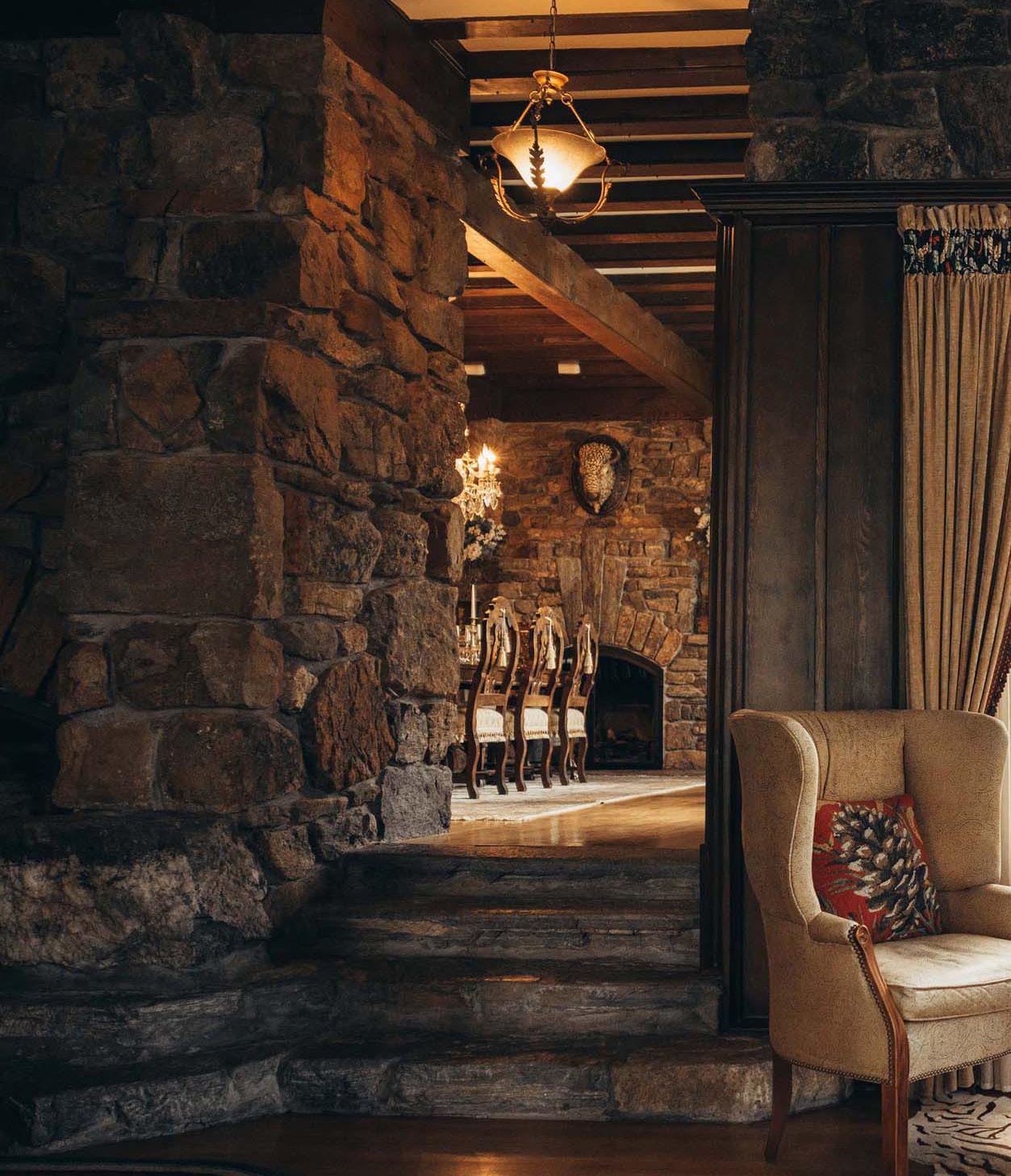

Throughout its storied history, Greystone has hosted Hollywood stars, famed Americans, and international politicians and celebrities all adding to its grandeur.
“Greystone has long been a place of refuge for dignitaries, celebrities and political leaders from across the globe,” says Kniss. Notable guests have included Dwight D. Eisenhower, Ladybird Johnson, Liberace, Groucho Marks, Mae West, Frank Sinatra, John Travolta, Israeli Prime Minister Shimon Peres, Bob Hope and many more. The owners describe it as their Castle in the Mountains, and I would agree.
“The Manor House is a work of art – a testament to hand-crafted, old-world construction – made of stone excavated from the land, and yet simultaneously warm and inviting. While the scale is grand, there is never a place or a moment that it feels overwhelming.”
It’s impossible to talk about the estate without mention of the land. To describe it as pristine isn’t fully accurate. It’s actually magical. Towering pines, elegant stands of aspen trees that turn golden in the fall, undulating hills with the kind of views that people paint, and all the while, the sounds of the river echoing through the property. It’s never the same place twice, which is a unique feature in and of itself.
The property has many extraordinary features. Kniss, who’s a fly fisherman, was immediately drawn to the Upper Bear Creek which runs through the property. “I could sit by the river and the pond, and just watch for hours (with my fishing pole in hand, of course!).”
But there is another feature on the property that equally draws Kniss. “I’m also completely enamored with the Historic Log Cabin, which was originally constructed outside of Jackson Hole, Wyoming, then subsequently taken apart, log by log, and rebuilt at Greystone in the 1980s. It’s an incredibly cozy and romantic place to get away and be very still and quiet.”
What does this property have that no other does? A combination of atmosphere and grandeur. It is a property that couldn’t be recreated today. The grandeur of the estate, combined with a remarkable history and a supreme sense of privacy and security is unmatched.


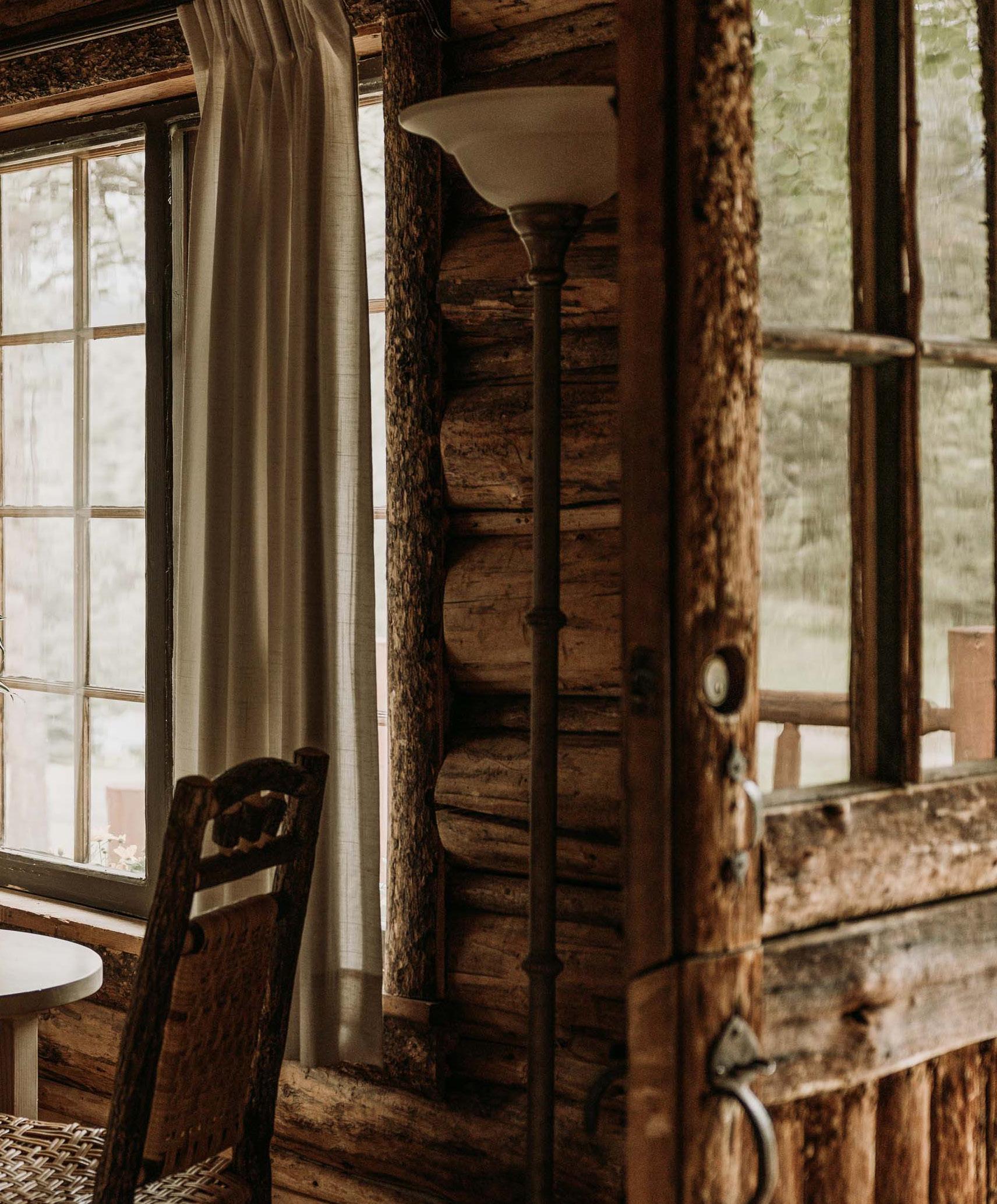


The main home itself is extraordinary. It features 25 rooms, with just over 12,000 square feet of living space. The current owners renovated the front of the home with a grand entrance that leads to the owner’s library and the stone bar just beyond.
There are 8 massive stone fireplaces located throughout the home, starting in the grand living room, and extending into the formal dining room. Original leaded glass windows surround the property on the main level. Multiple sets of double doors lead from the grand living room to the magnificent grounds, and down to the pool and hot tub area. There are 6 total bedrooms, 8 bathrooms, a fitness center – even a hidden bedroom. The Manor House features formal and informal living areas, as well as multiple decks and terraces around the main floor of the home. There is also a subterranean wine cellar that holds thousands of bottles of wine, and two separate garages for as many as 5 cars.
“I always think about what it’s like to live in a particular place,” says Kniss. “What about this place makes it unique or special? And with such a magnificent estate, that question becomes even more important. It’s a question that the owners are frequently asked, and their answer is always the same: It is whatever you want it to be. That might sound trite to some, but there’s a truth to it as well. Everyone who is fortunate enough to visit Greystone experiences it differently. For some, it’s the pure grandeur of the estate that captures their hearts. For others, it’s the legacy and the storied history of the estate. And for others still, it is the supreme sense of privacy and security that comes with owning 55 acres of pristine land hidden from view behind a gated entrance. How someone experiences the estate is an intensely personal experience.
“And yet some experiences are as constant as the mountains. It starts with a sense of wellness and peace. Just being surrounded by such natural beauty, the sights, sounds (and lack thereof), and smells start to slow things down, allowing one’s mind to soften. There’s a connection that is omnipresent – a connection to the earth, and a connection to the people with whom you surround yourself. There’s a flow to Greystone – just like the river – a change of seasons, a change of perspectives, and a change of attitudes. It is never the same place twice…”



Schneebauer was born in the Upper Austrian city of Wels and raised in nearby Lambach. She studied at both the University of Vienna and the University of Salzburg. A lawyer with a doctorate in philosophy, Schneebauer began her diplomatic career in 1993 as an intern at the European Commission in Brussels.
Assigned to Austria’s United Nations mission in New York (1997-2001), Schneebauer helped coordinate her country’s first EU presidency in 1998. Among her other overseas appointments was Austria’s consulgeneral in Zürich, Switzerland (2007-11) and ambassador to Malta (2011-15). She then went to the Consular Crisis Center (2015-17), where her duties included the timely update of travel advice as well as assisting Austrian victims of terrorist attacks and natural disasters abroad.



The European Union Delegation and Ambassador Stavros Lambrinidis hosted the second annual Transatlantic Bridge Awards at the House of Sweden. Dr. Anthony Fauci, Sen. Rob Portman, and journalist Judy Woodruff received awards for their efforts in fostering ties between the US and Europe. Lambrinidis, along with Swedish Ambassador Karin Olofsdotter, opened with remarks about Europe’s current goals and highlighted the strength of US-EU relations. The event commemorated Europe Day, which falls on the anniversary of the 1950 Schuman Declaration, which laid the groundwork for the present-day European Union.
The Embassy of the United Arab Emirates, in collaboration with Emirati students from nearby universities and partners at Rock Creek Conservancy, hosted a cleanup at Rock Creek Park in celebration of Earth Day. During the cleanup, participants aided park managers in their efforts to control the spread of English ivy and preserve the native flora. It concluded with a hike, putting into perspective the importance of environmental stewardship.


Luxury Isn’t Just a Price Point, It’s a State of Mind! John Eric Home is pleased to bring to our readers exceptional luxury homes and properties available throughout the United States and the world.
These properties are presented by our luxury partners who are the most sought-after experts and advisors in luxury real estate.
johnerichome.com
johnandtrevor.com



















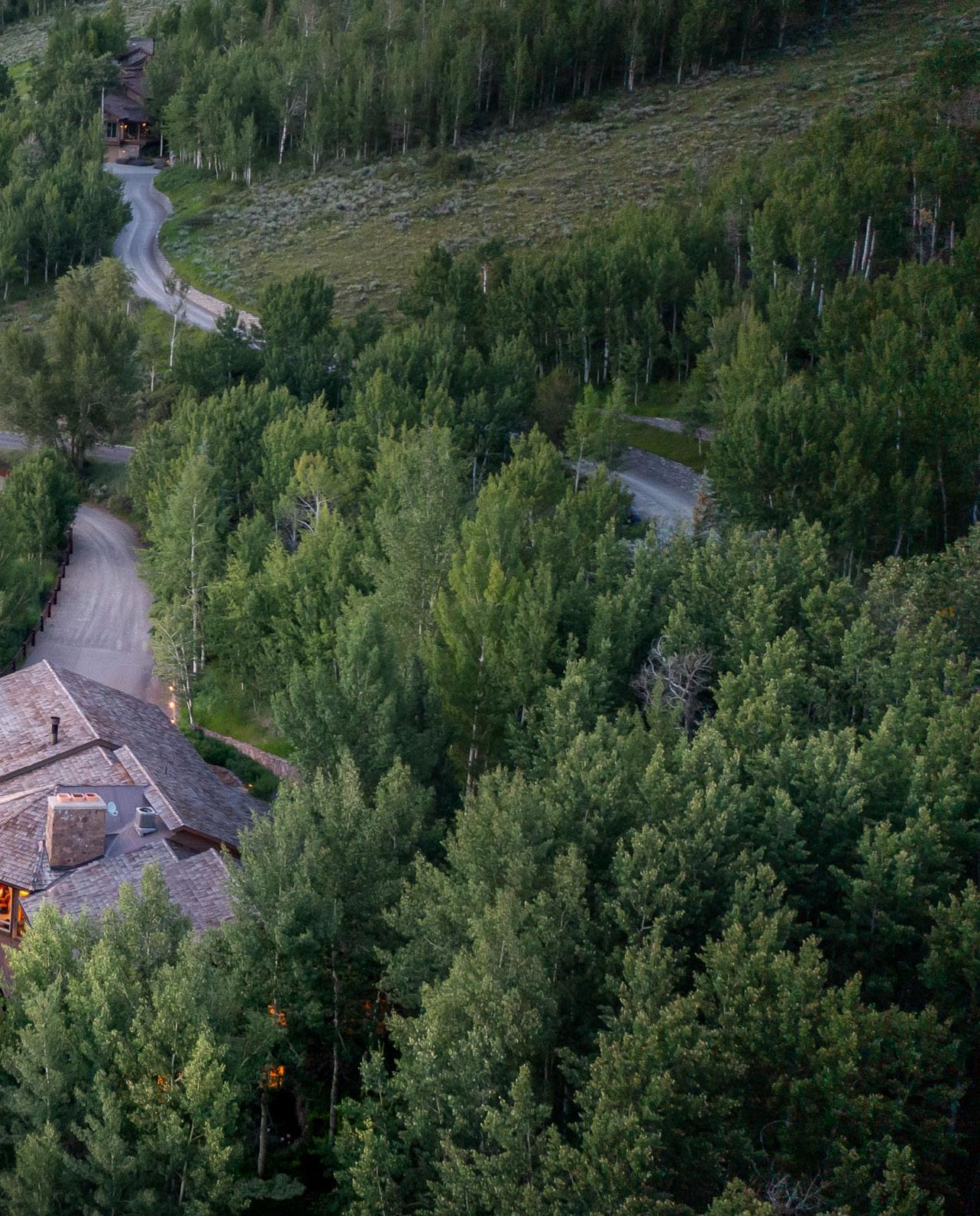



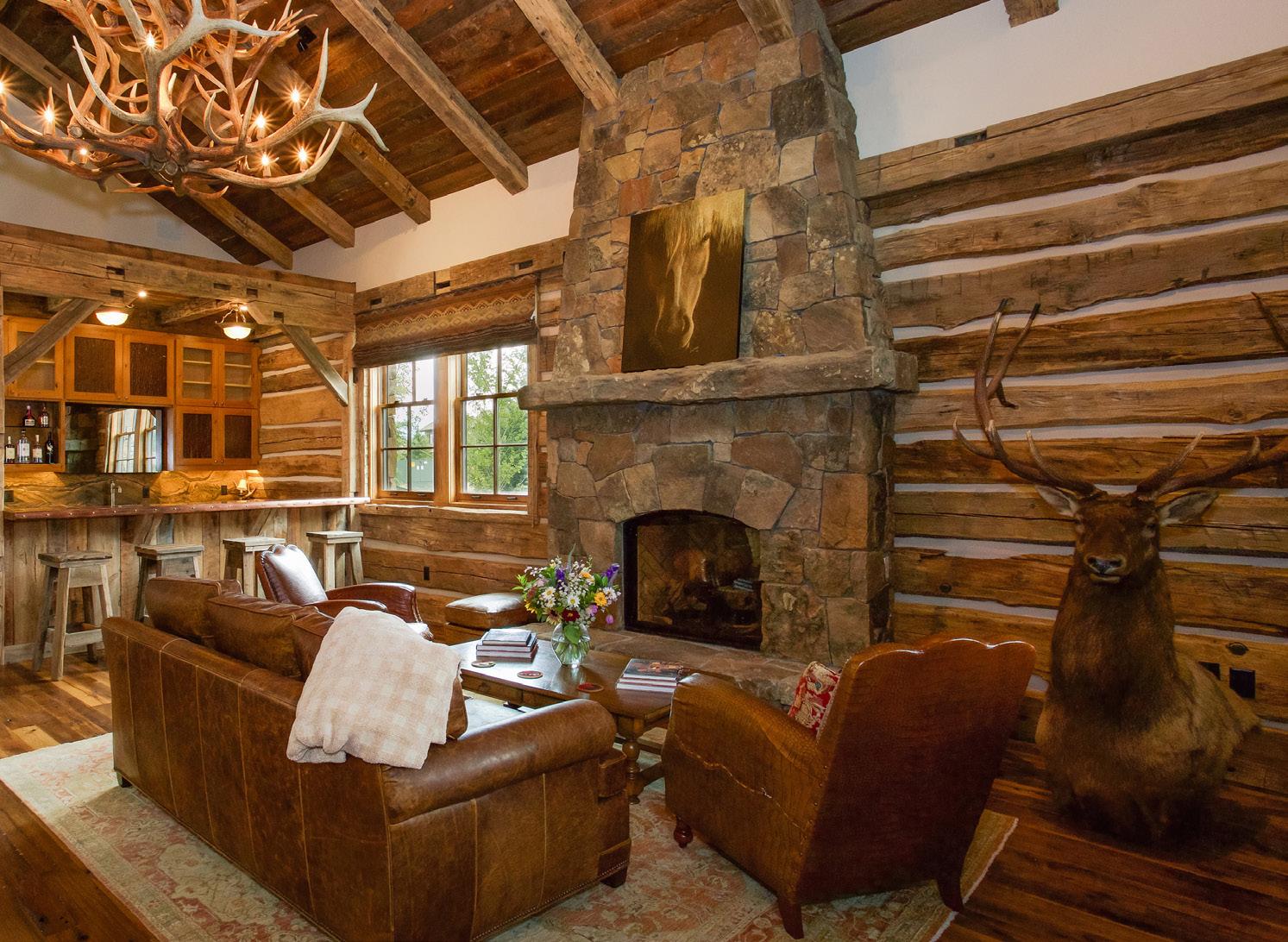














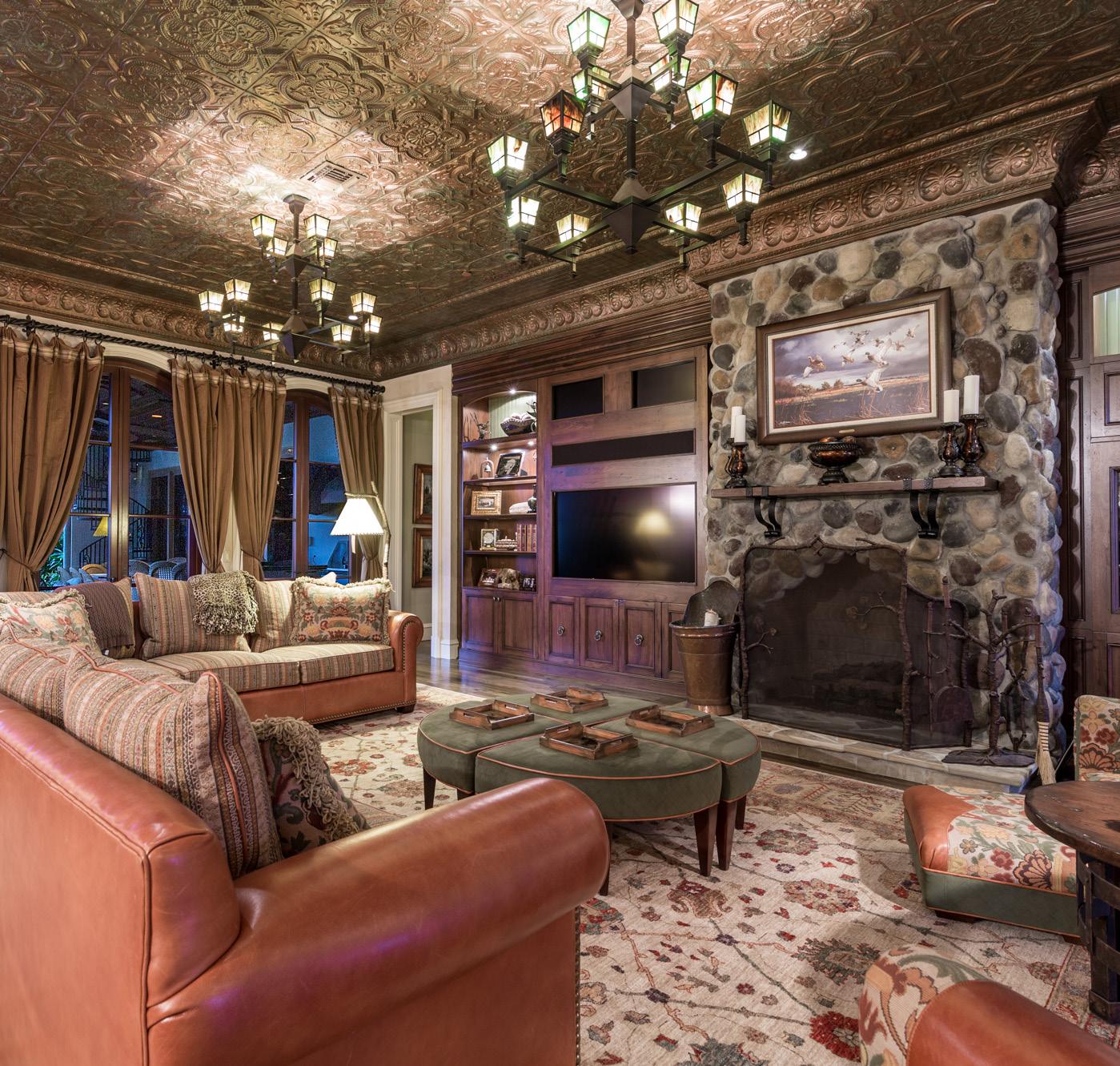














































































































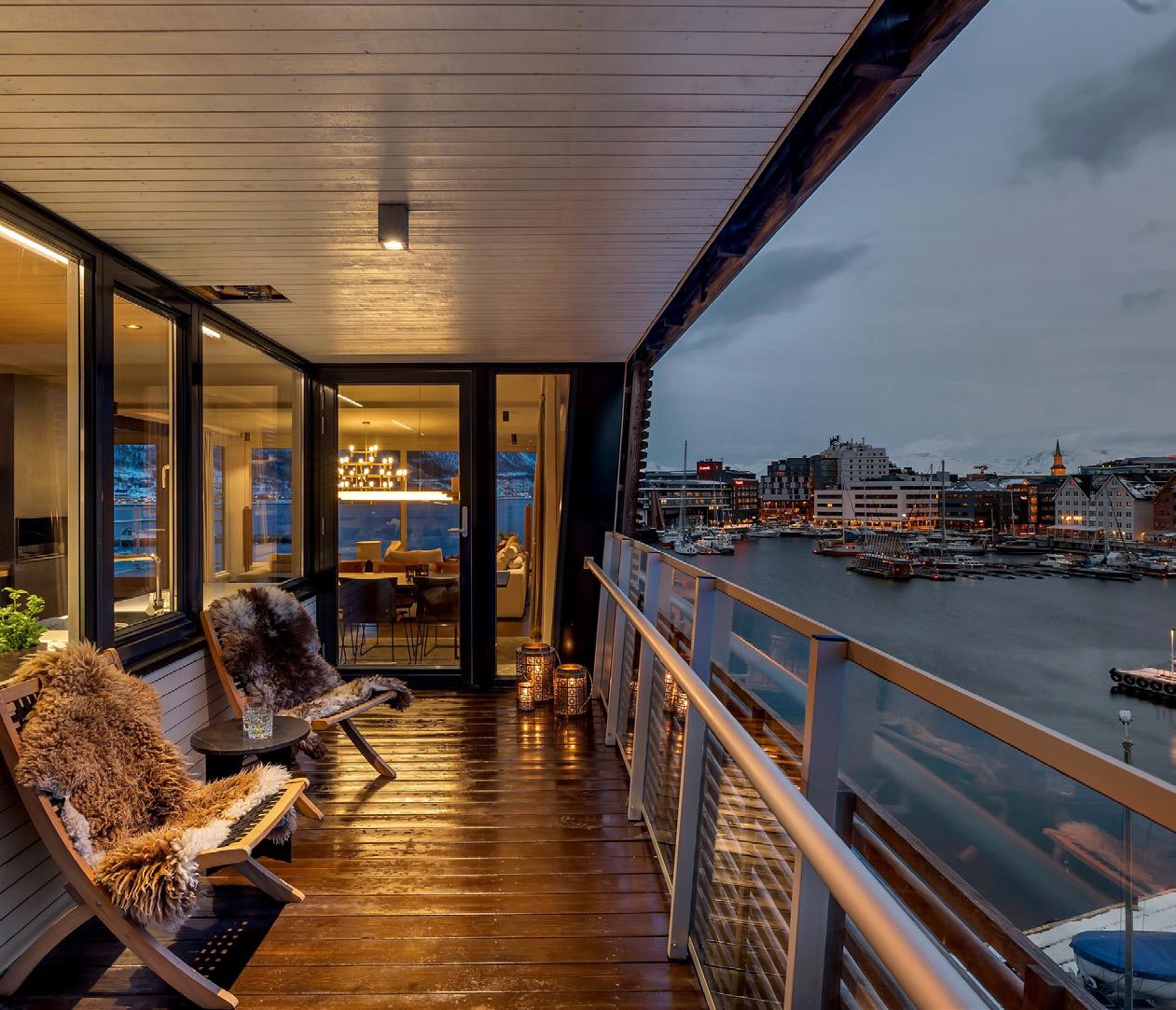








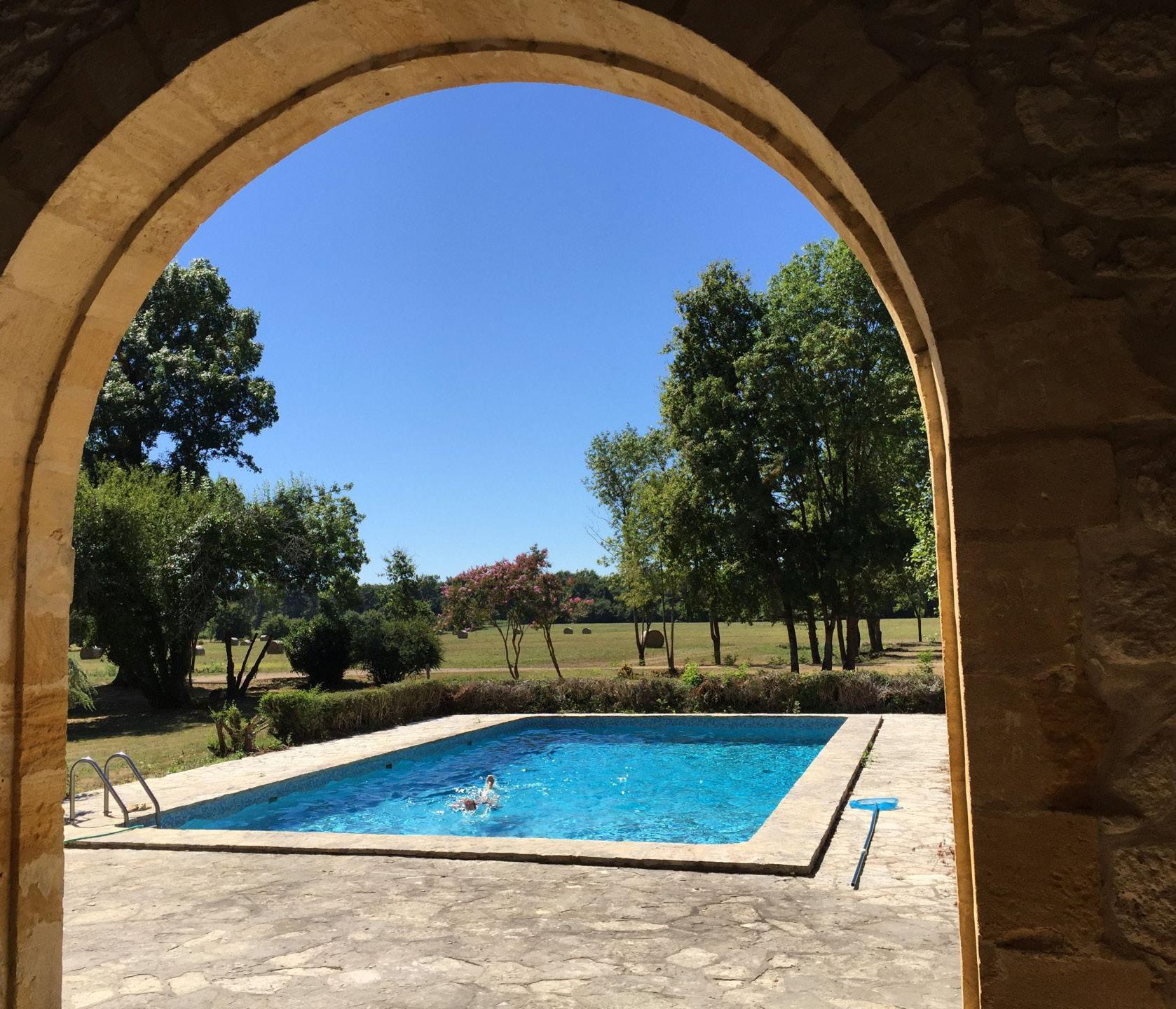
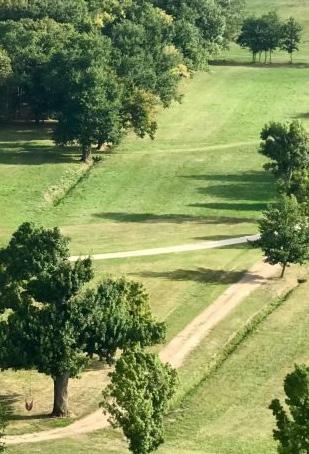




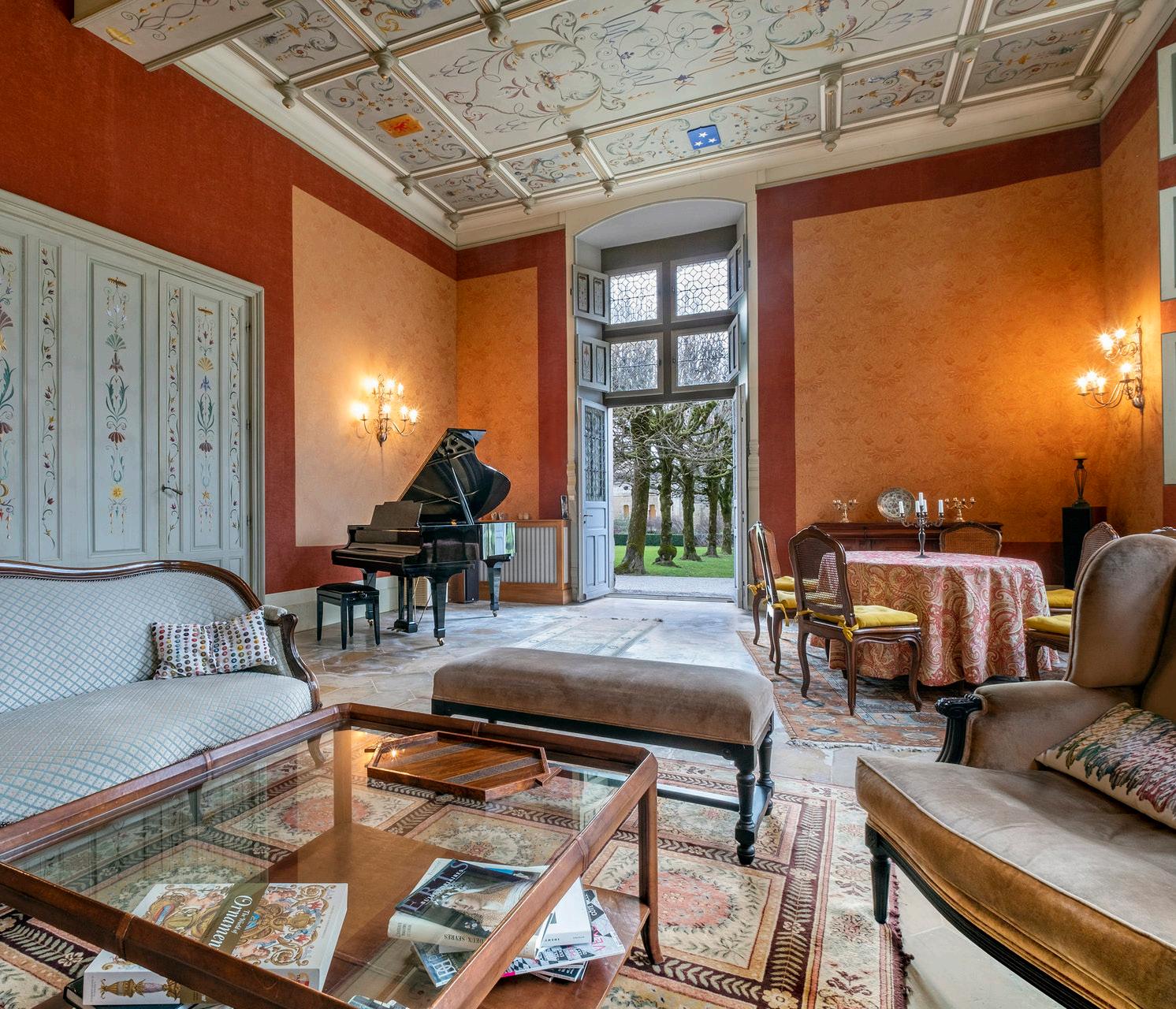
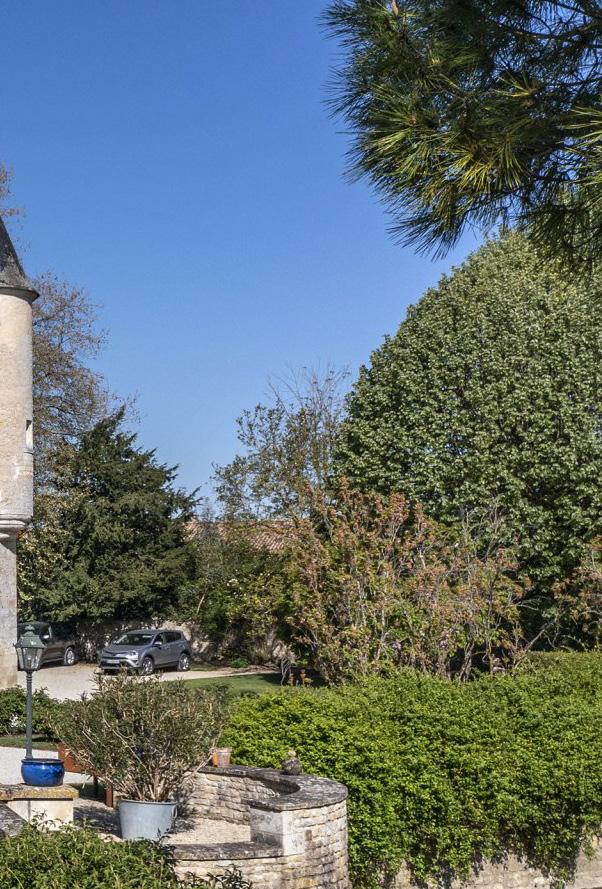


























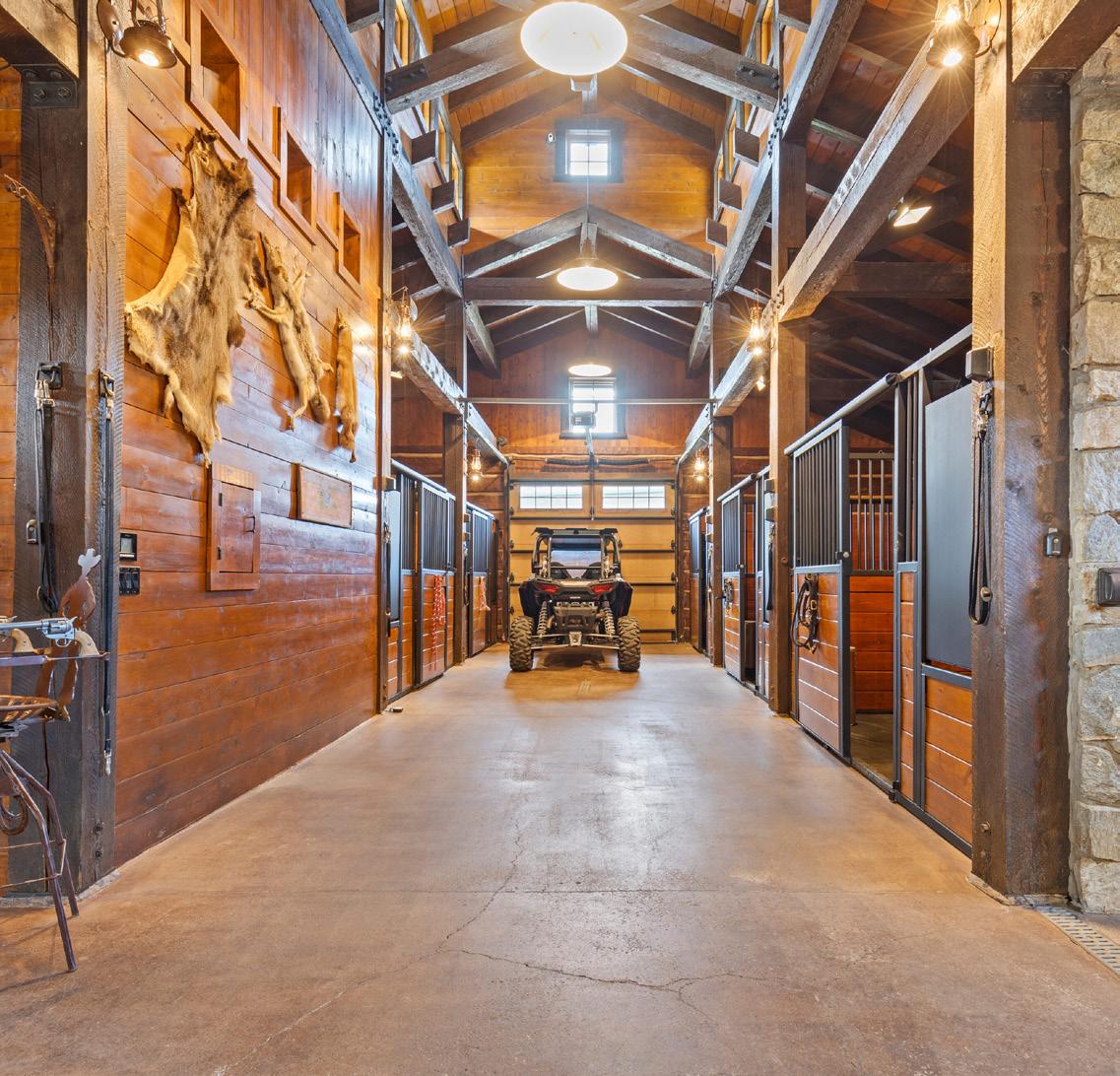








THE MOST COVETED MEMBERSHIP IN LUXURY REAL ESTATE

500+ members
325,000+ clients
40+ states
110+ brands
12 countries
And we're just getting started



